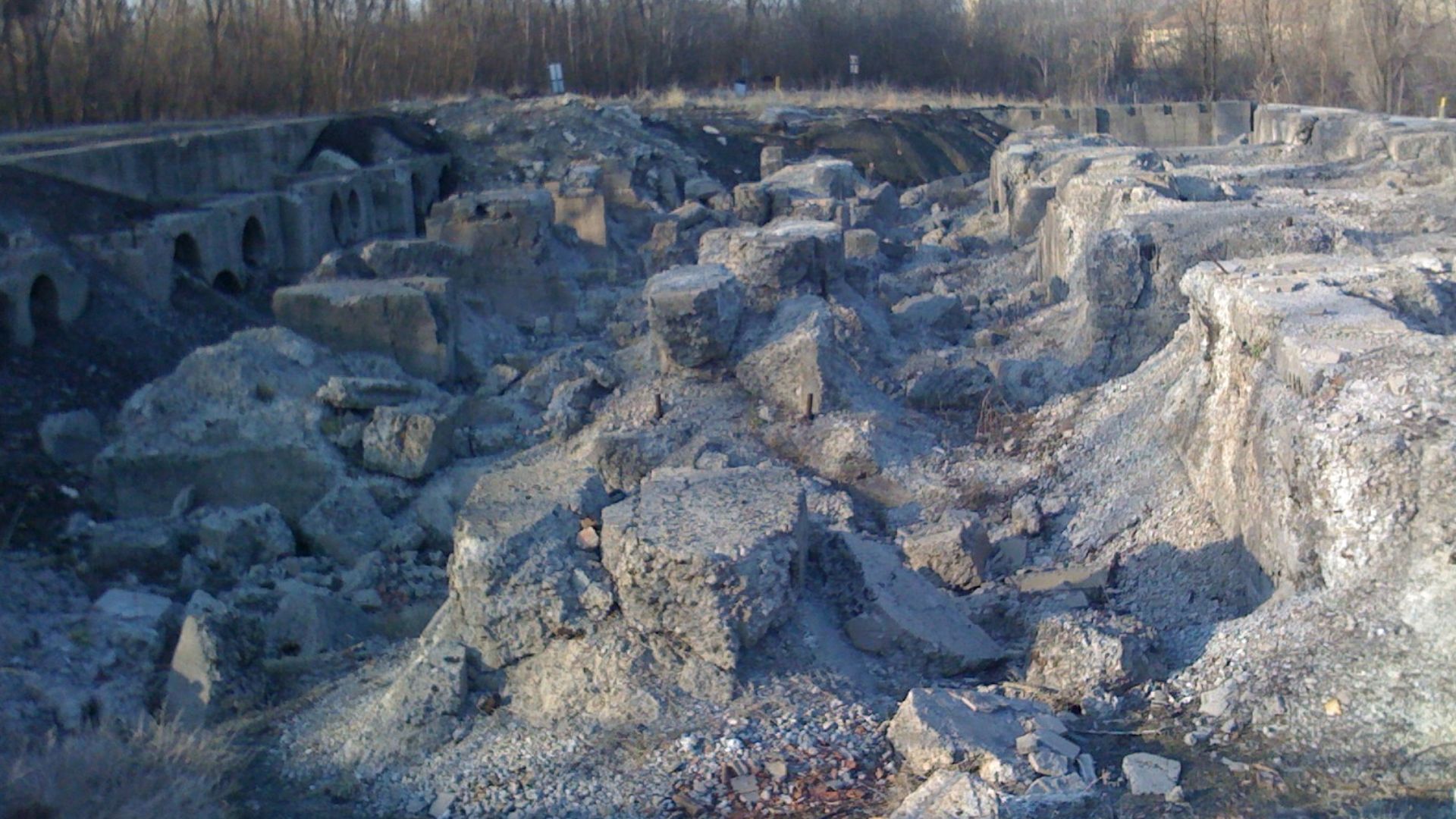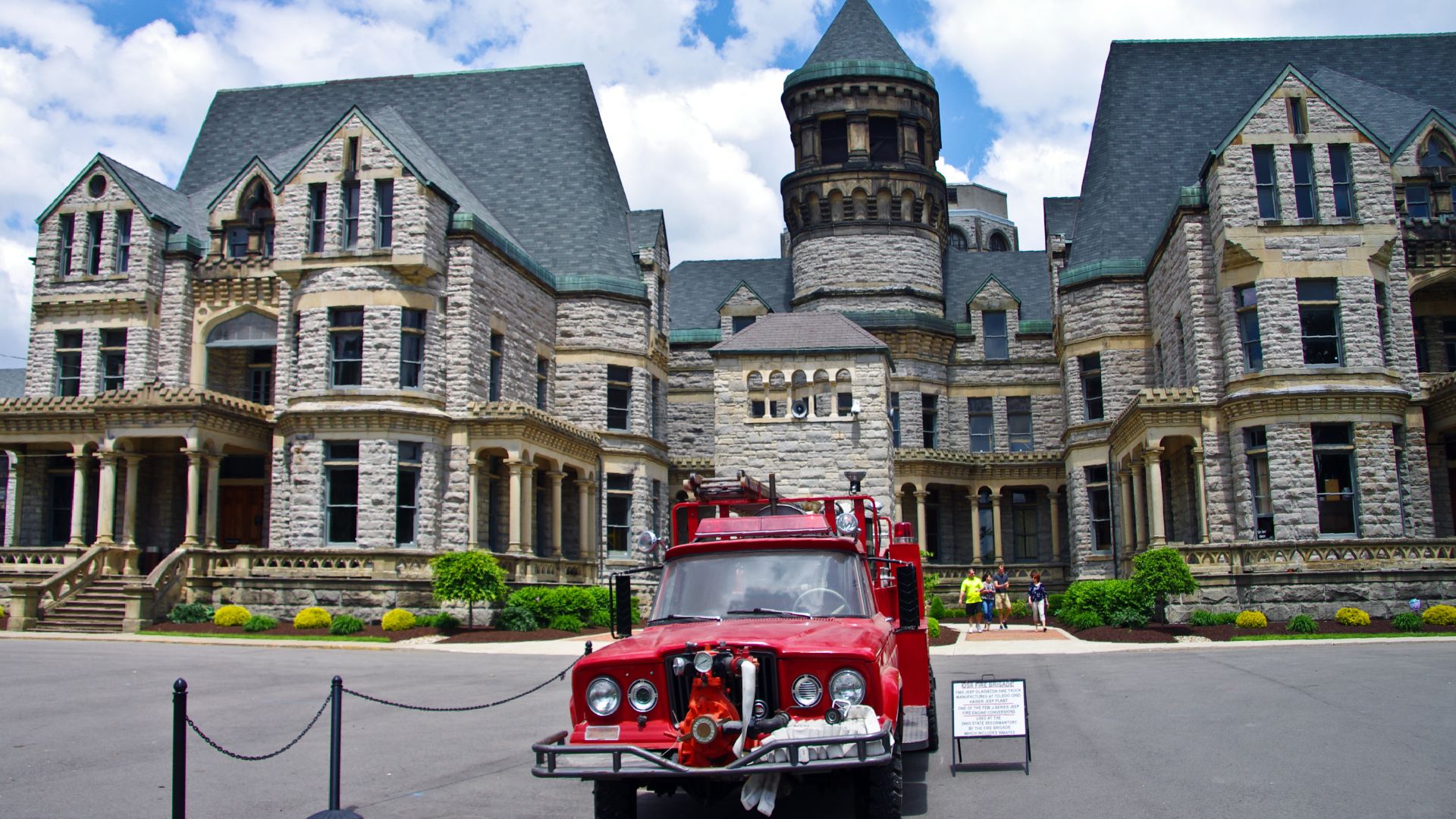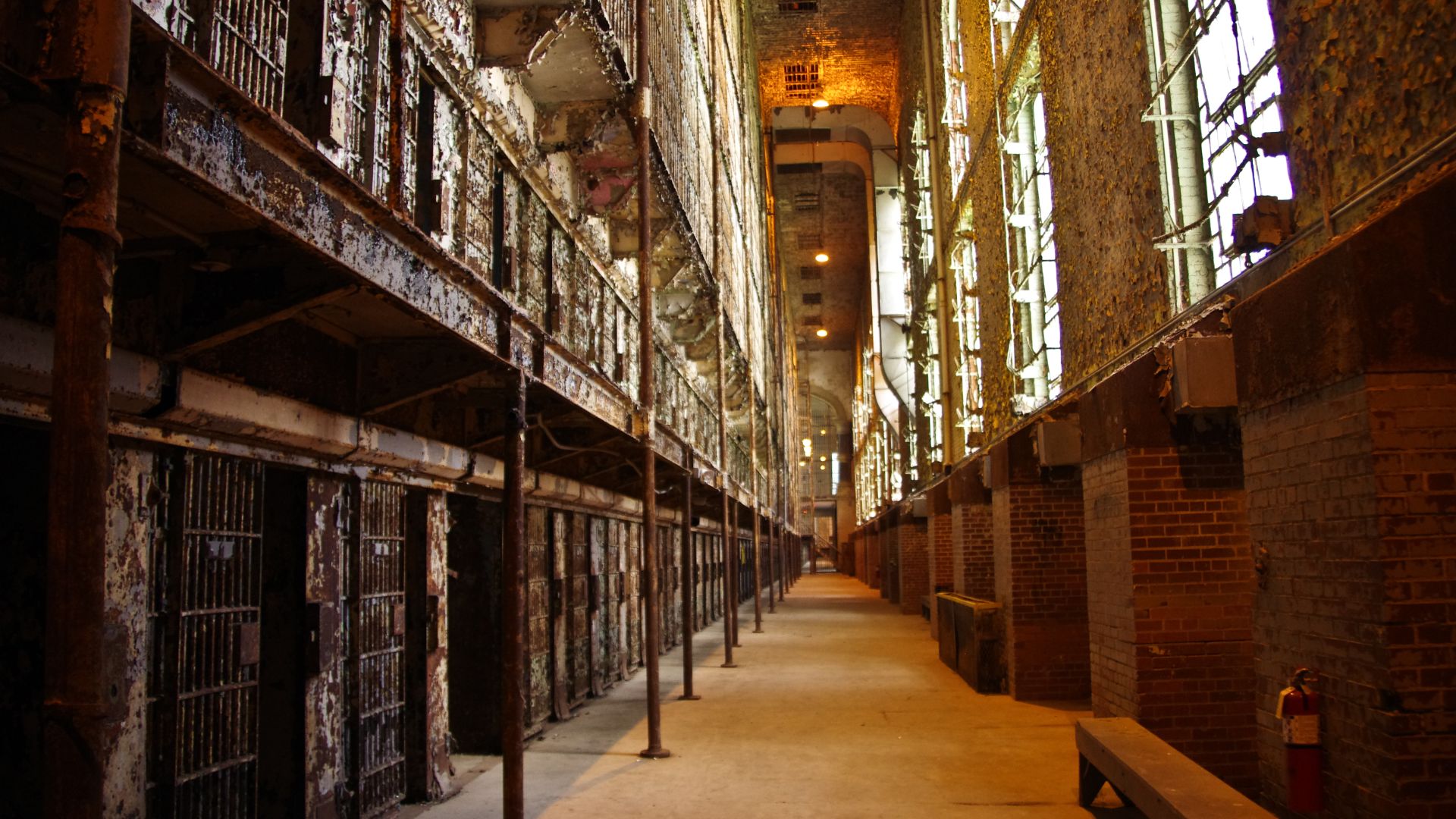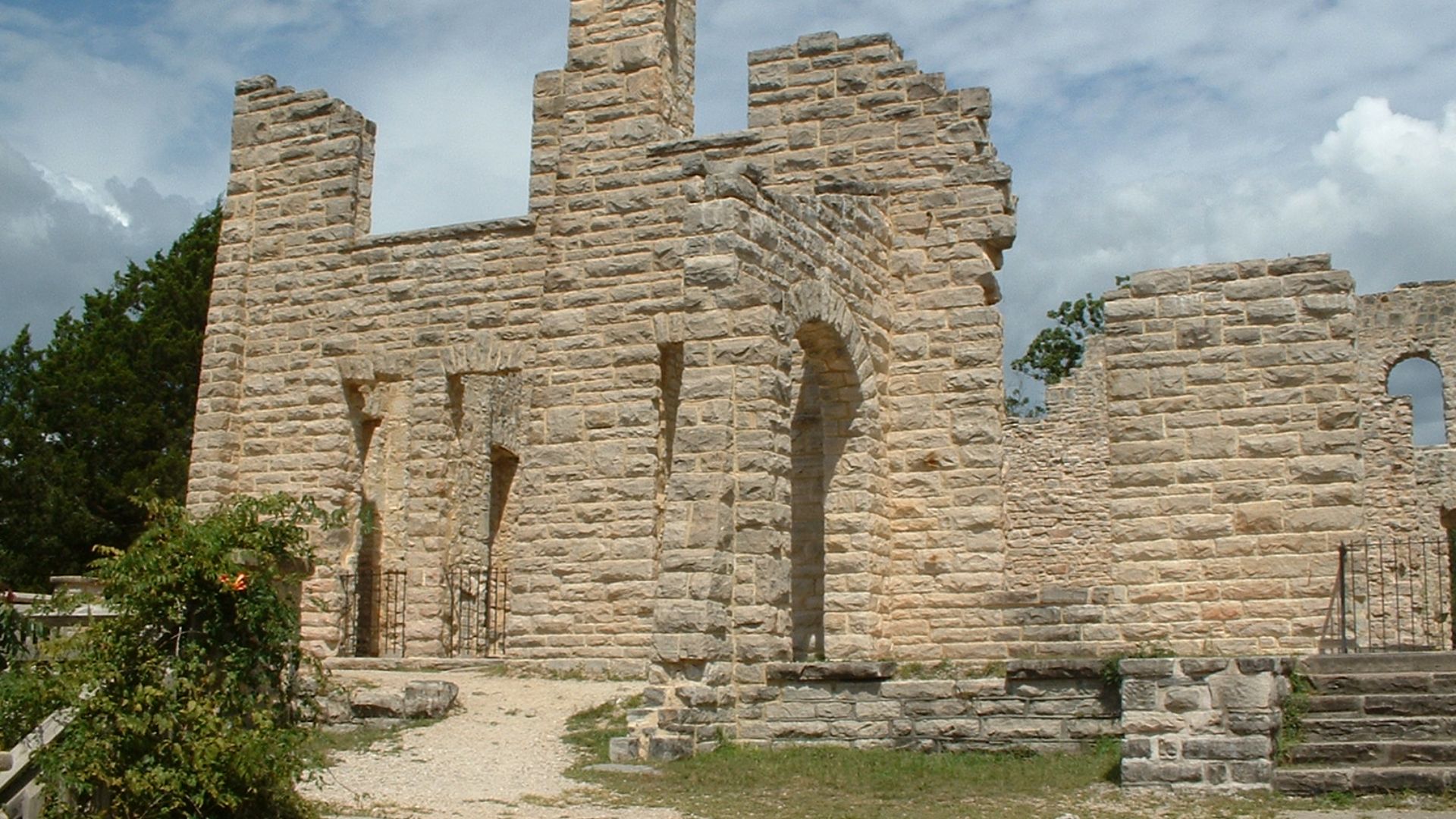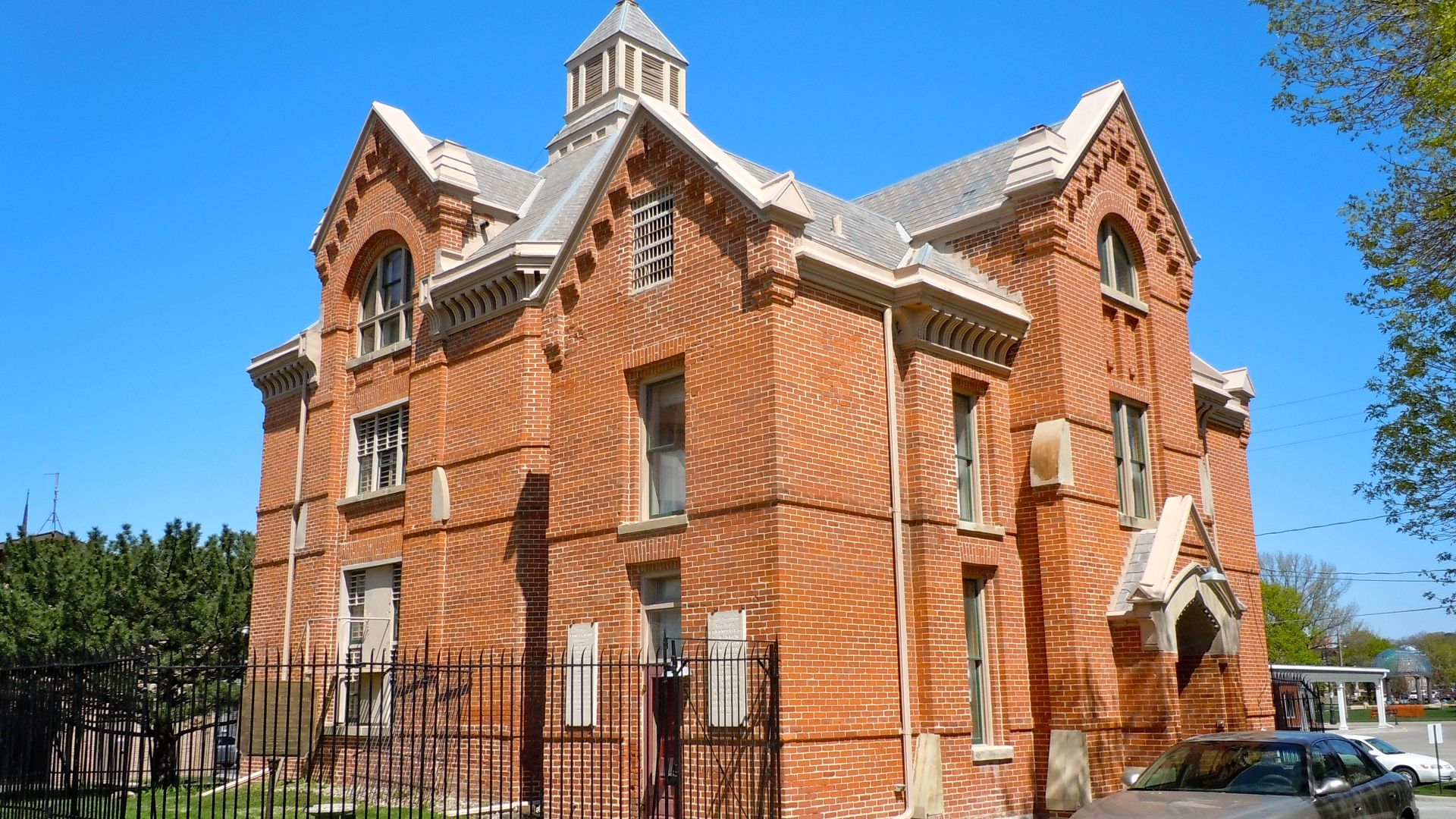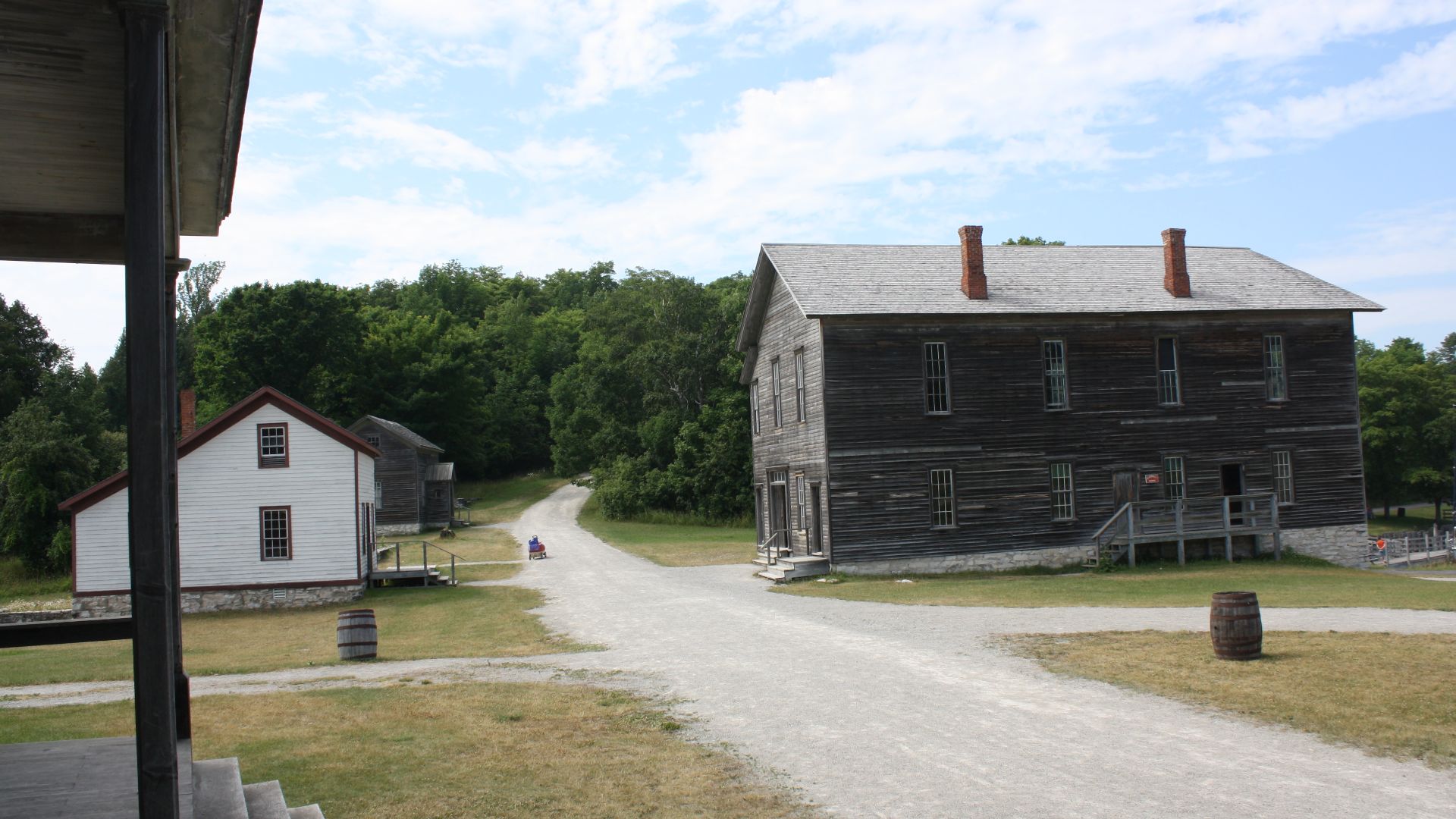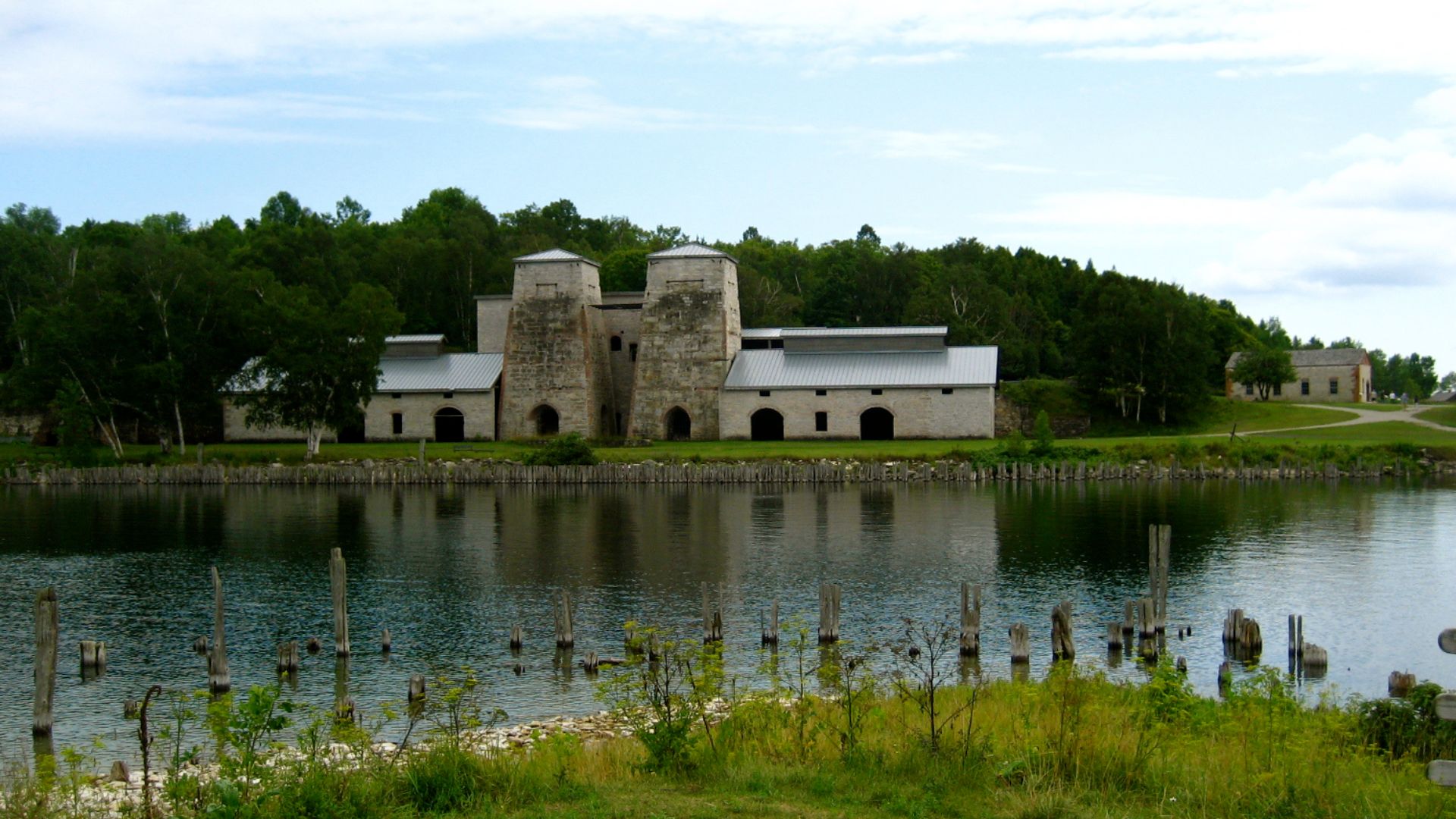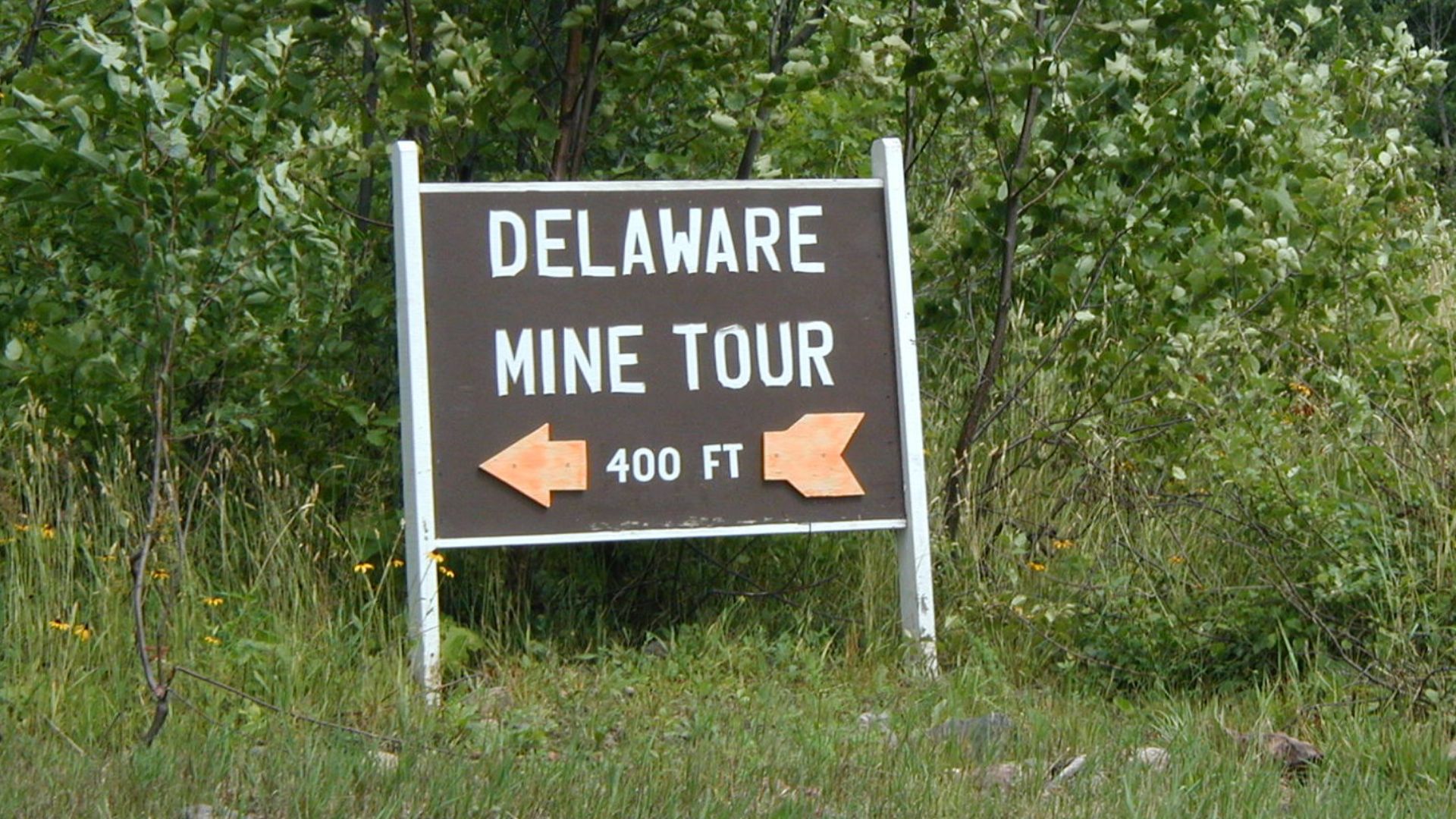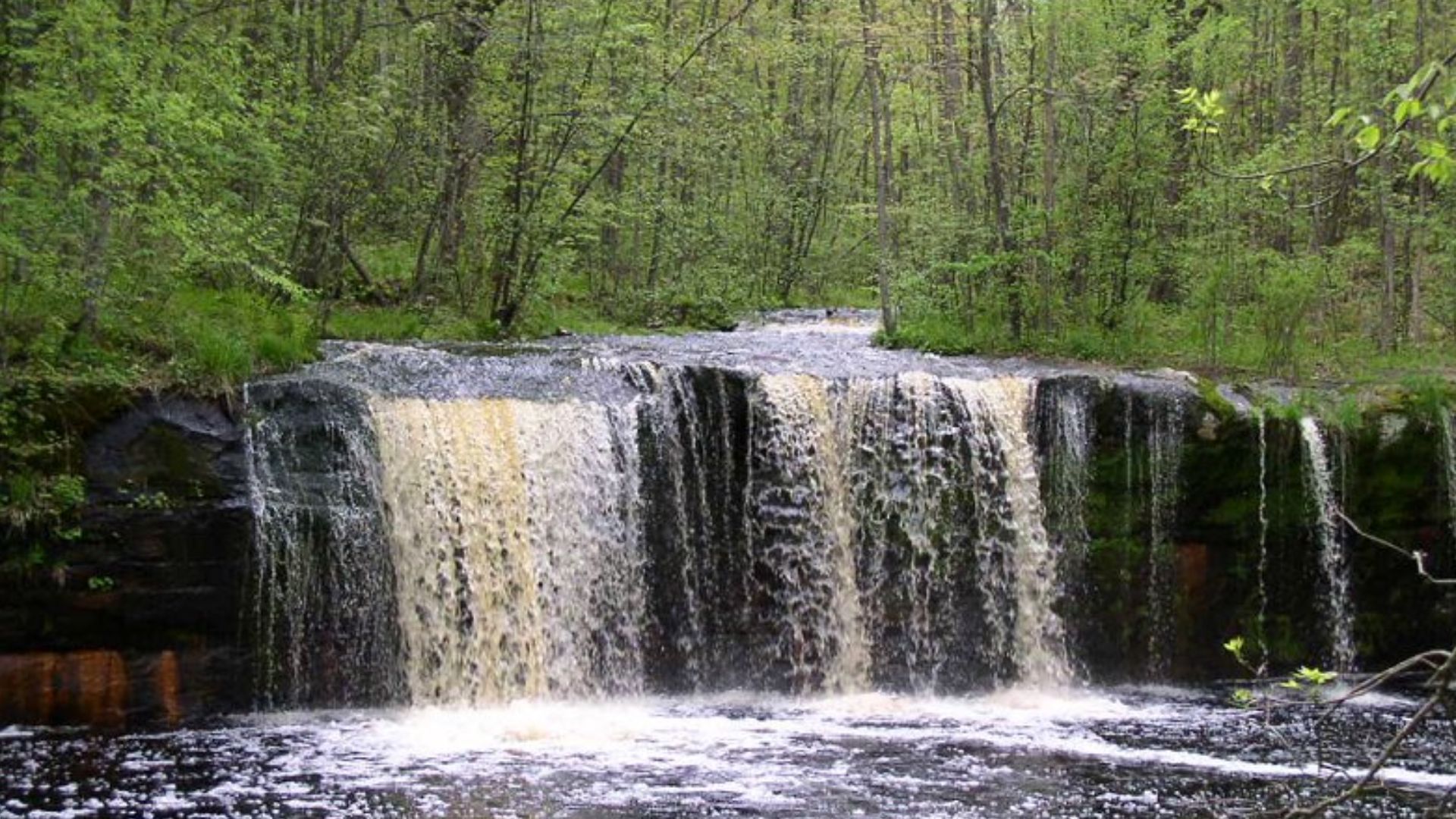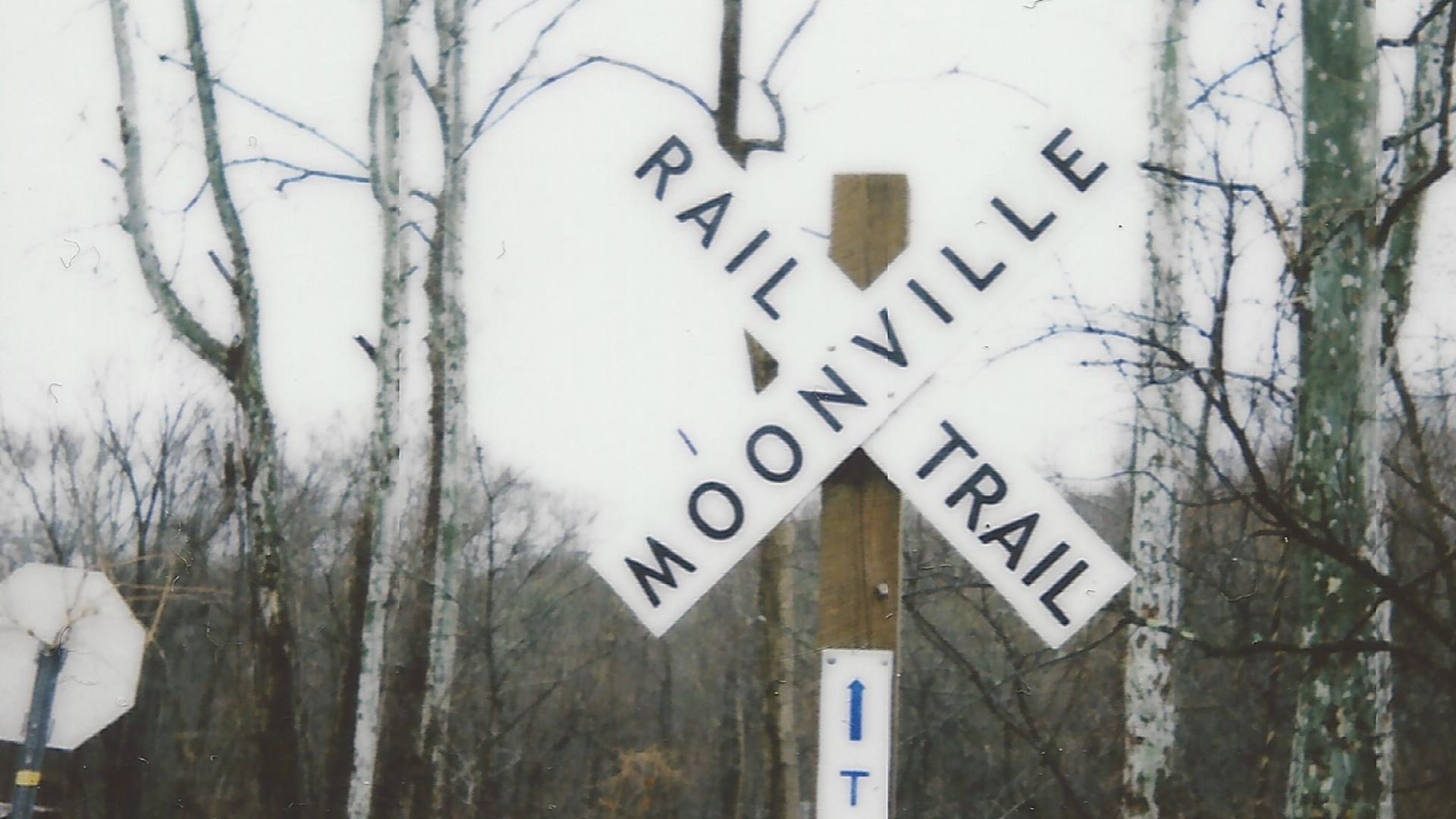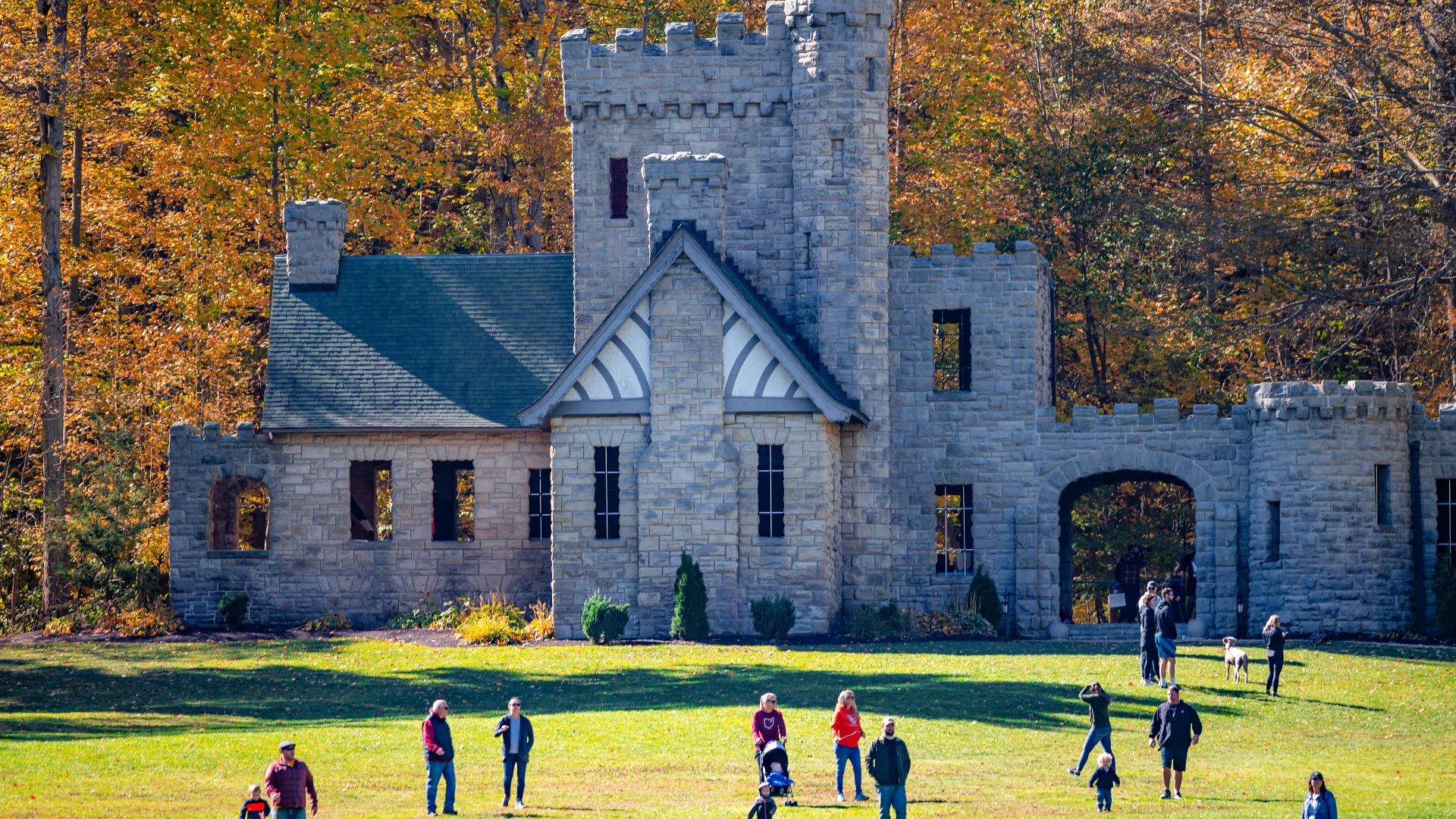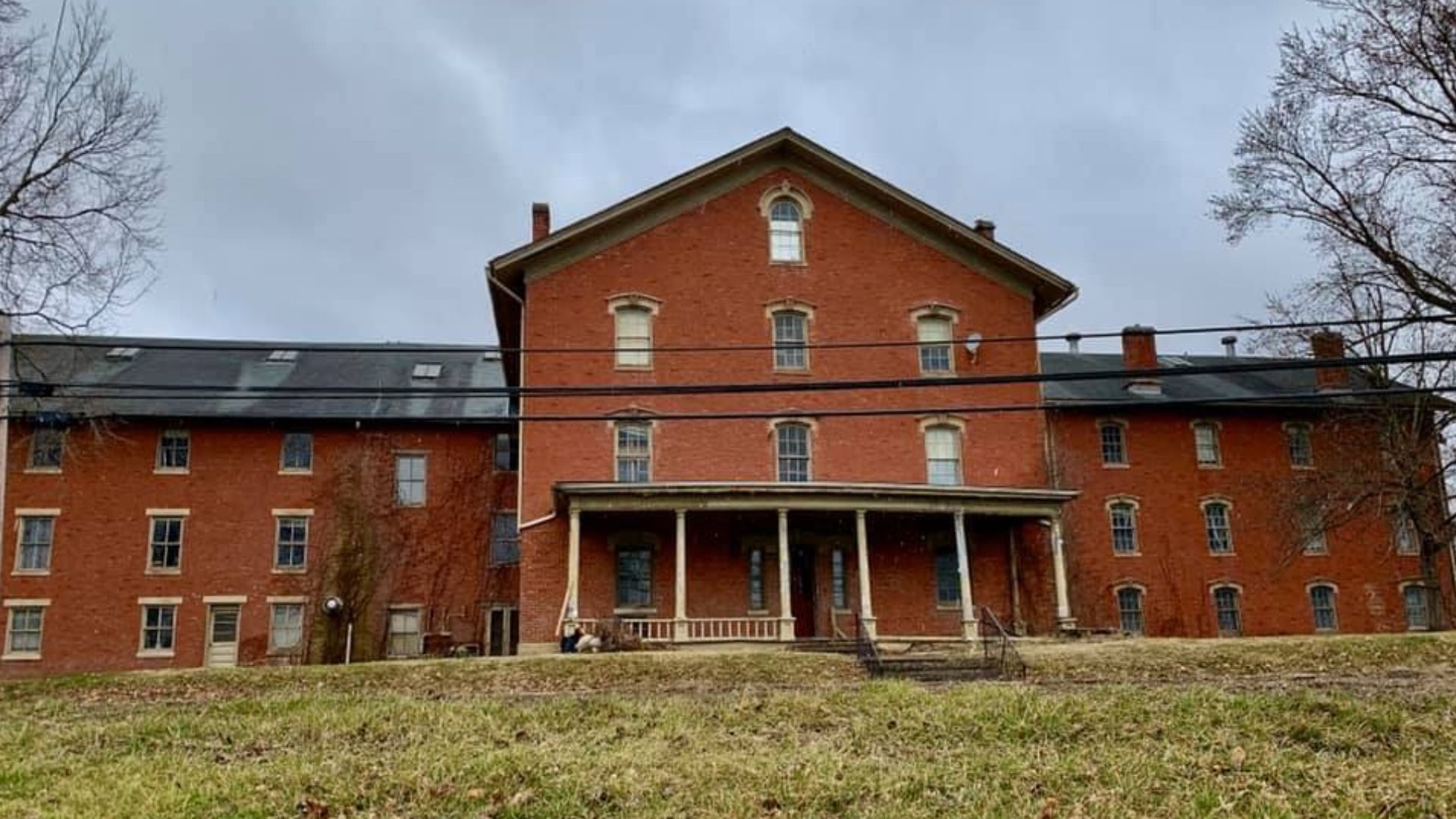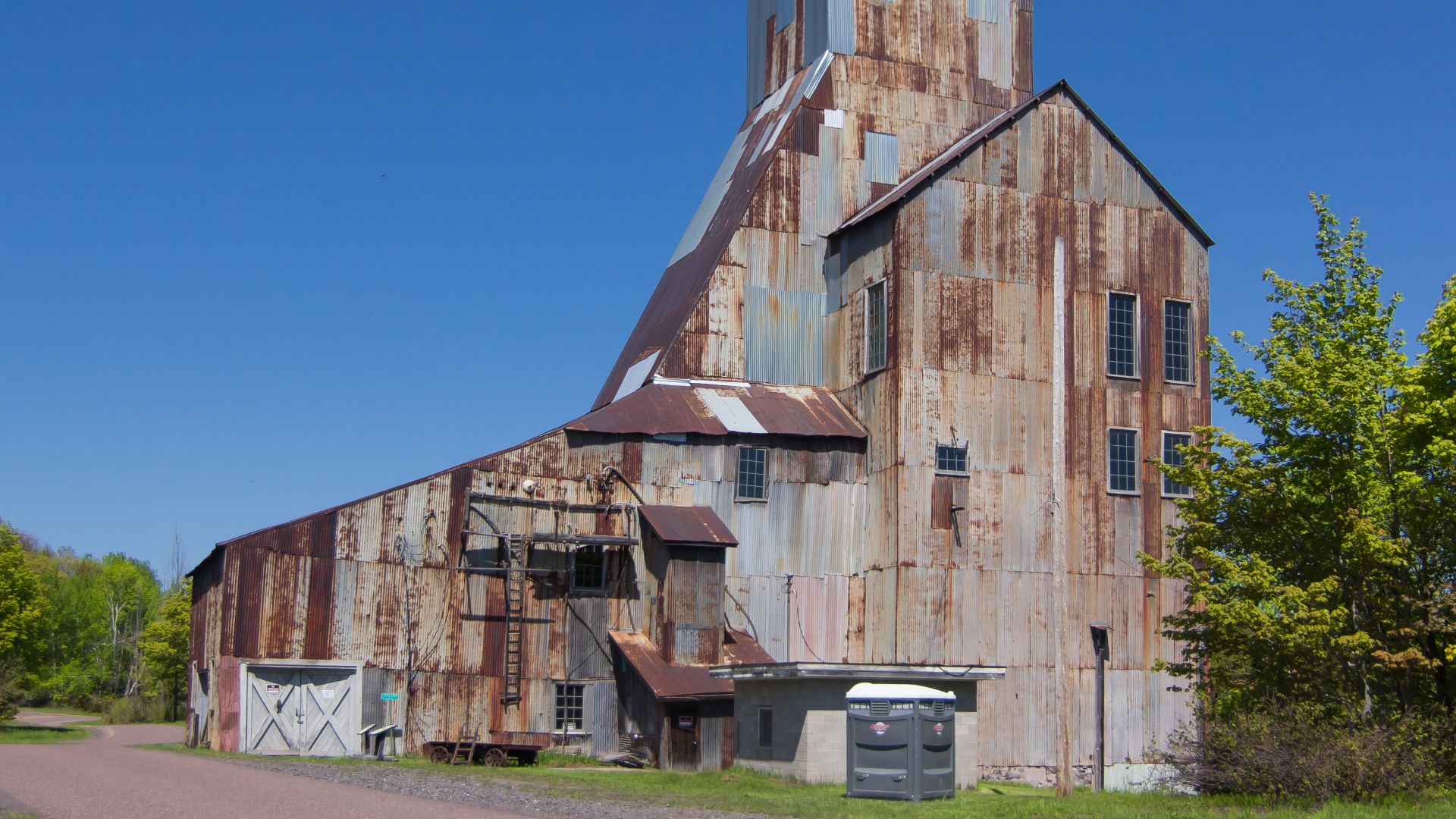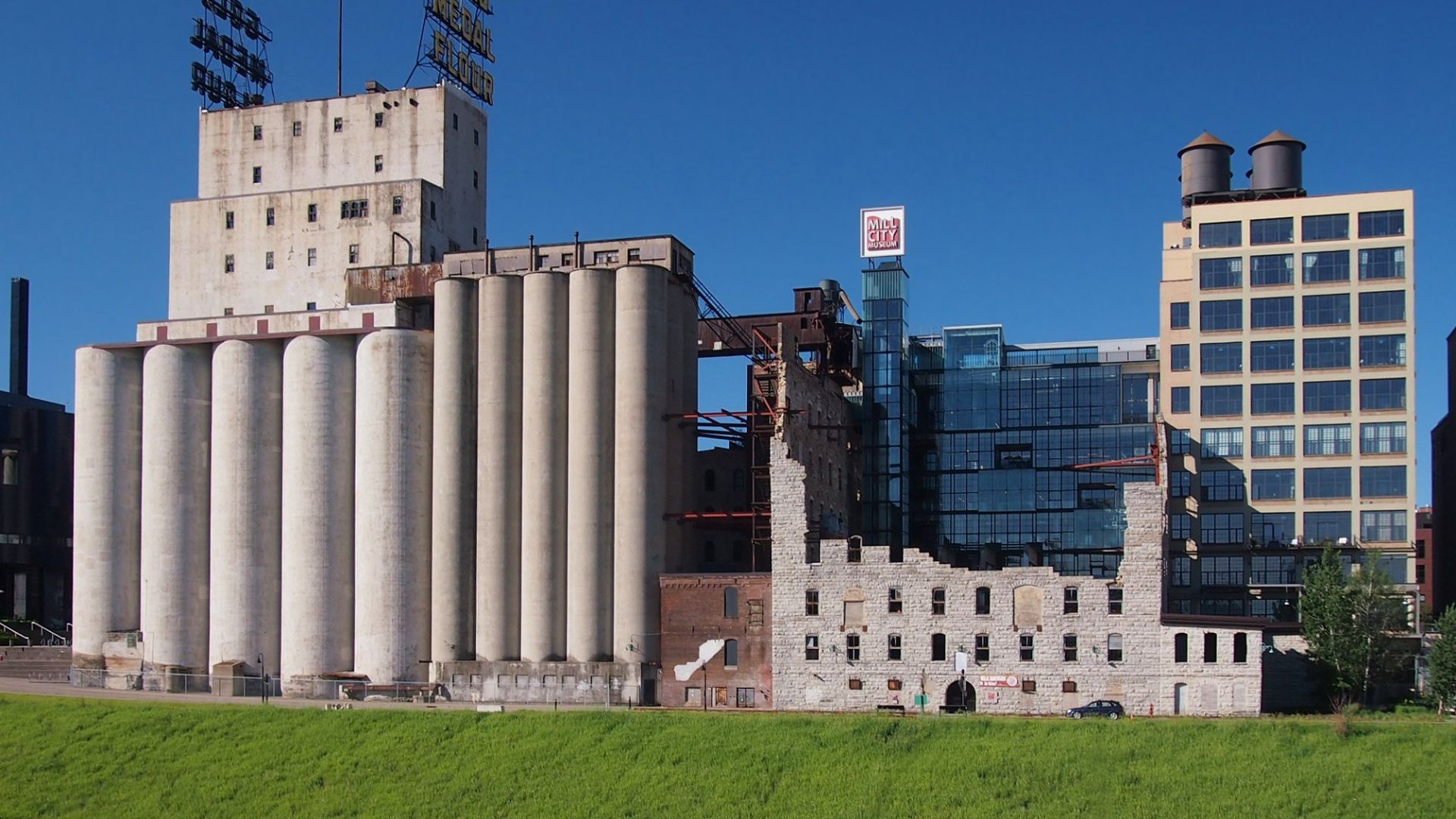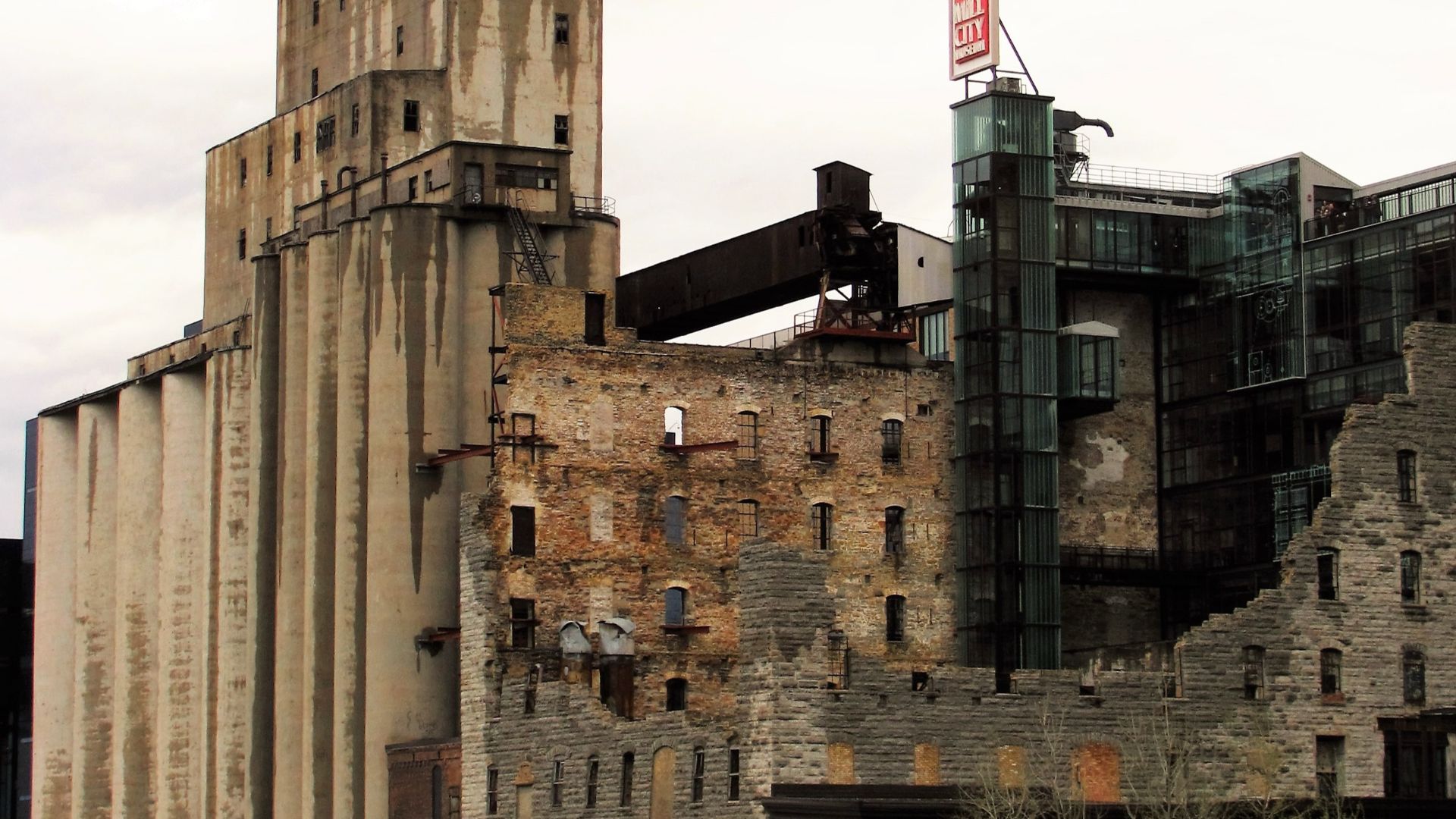Shadows Of the Heartland
Old factories hum with silence, church bells never ring, yet something lingers. These forgotten Midwest corners still whisper their stories to anyone curious enough to listen (or visit).
Joliet Iron And Steel Works, Joliet, Illinois
From the late 1800s through the roaring 1930s, the Joliet Iron and Steel Works stood as a titan of American industry, its furnaces blazing day and night to forge pig iron and steel rails that connected the nation’s expanding railroads and growing cities.
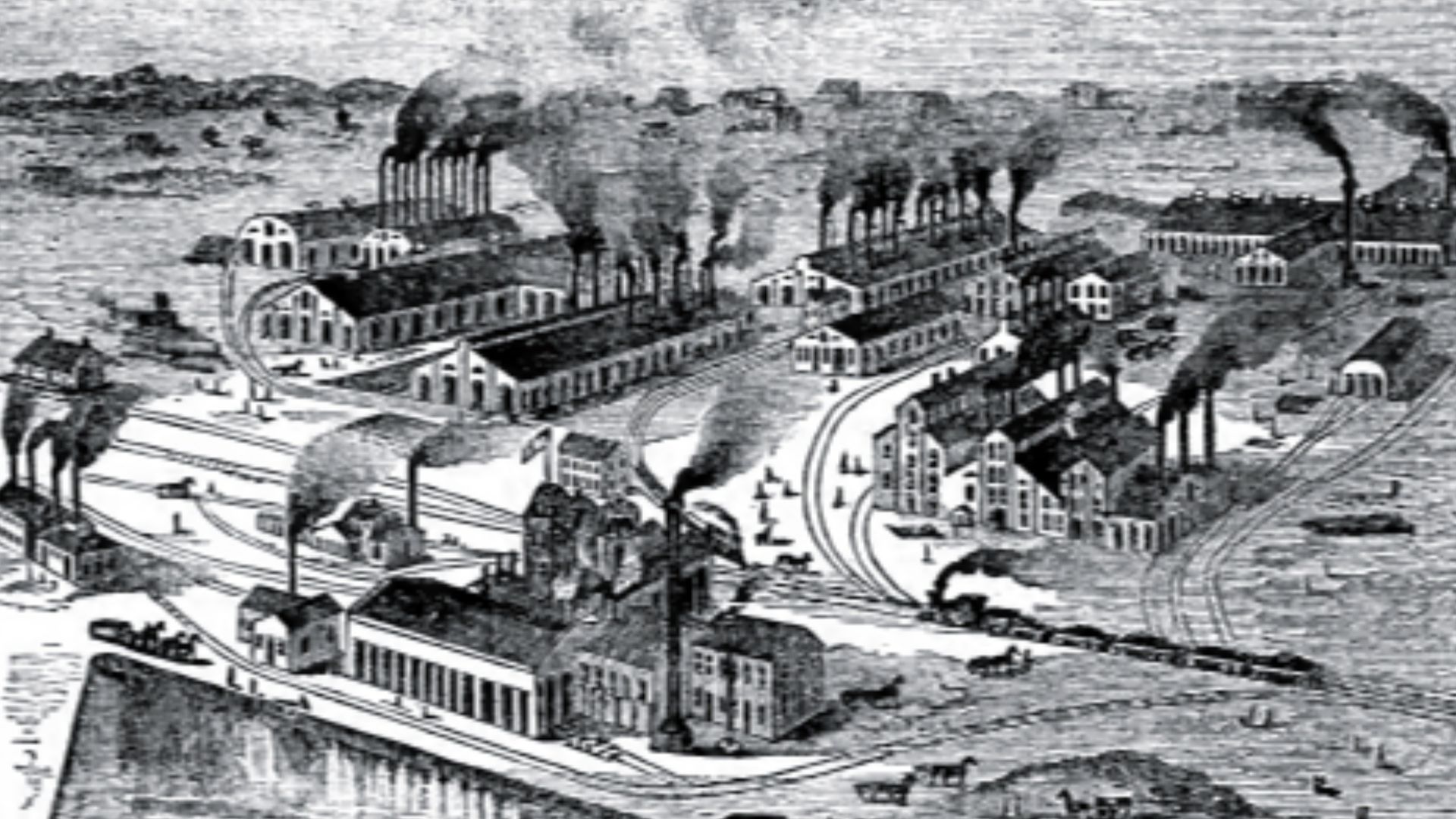 Unknown authorUnknown author, Wikimedia Commons
Unknown authorUnknown author, Wikimedia Commons
Joliet Iron And Steel Works, Joliet, Illinois (Cont.)
Like many giants of its time, the plant fell silent after decades of production. Today, its vast remains form a peaceful historic park where visitors explore trails winding through the old foundations, discovering stories of the workers who once made Joliet tremble with energy.
Joliet Ammunition Plant Bunkers, Wilmington, Illinois
Once alive with the urgent manufacture of WWII munitions, the Joliet Ammunition Plant now rests within the calm beauty of Midewin National Tallgrass Prairie. Built in 1940, it produced bombs and shells vital to the war and left behind a legacy of industry and sacrifice.
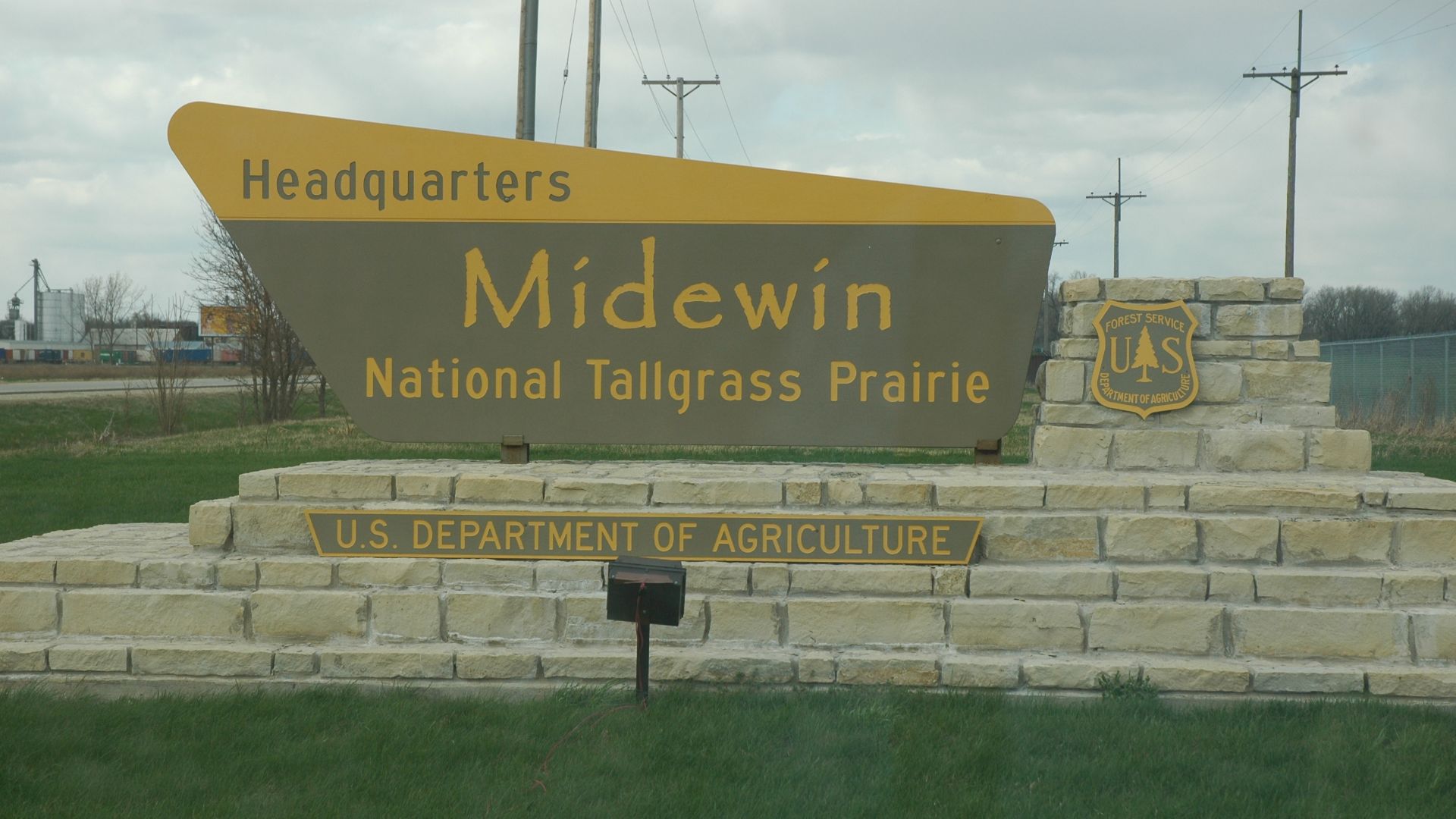 Robert Guico (Lpangelrob), Wikimedia Commons
Robert Guico (Lpangelrob), Wikimedia Commons
Joliet Ammunition Plant Bunkers, Wilmington, Illinois (Cont.)
Over a hundred concrete bunkers still dot the land, some open to visitors. The 3.6-mile Group 63 Interim Trail leads explorers past these relics, where nature now surrounds the former arsenal. This site blends wild prairie growth with the lingering presence of America’s wartime past.
 Exploring the inside of an abandoned TNT bunker in Illinois by Abandoned or Cool
Exploring the inside of an abandoned TNT bunker in Illinois by Abandoned or Cool
Old Joliet Prison, Joliet, Illinois
Movie fans might recognize Old Joliet Prison’s looming limestone facade from The Blues Brothers, but the real story stretches far beyond Hollywood. From 1858 to 2002, this maximum-security penitentiary confined generations within its cold stone walls before finally closing its iron gates.
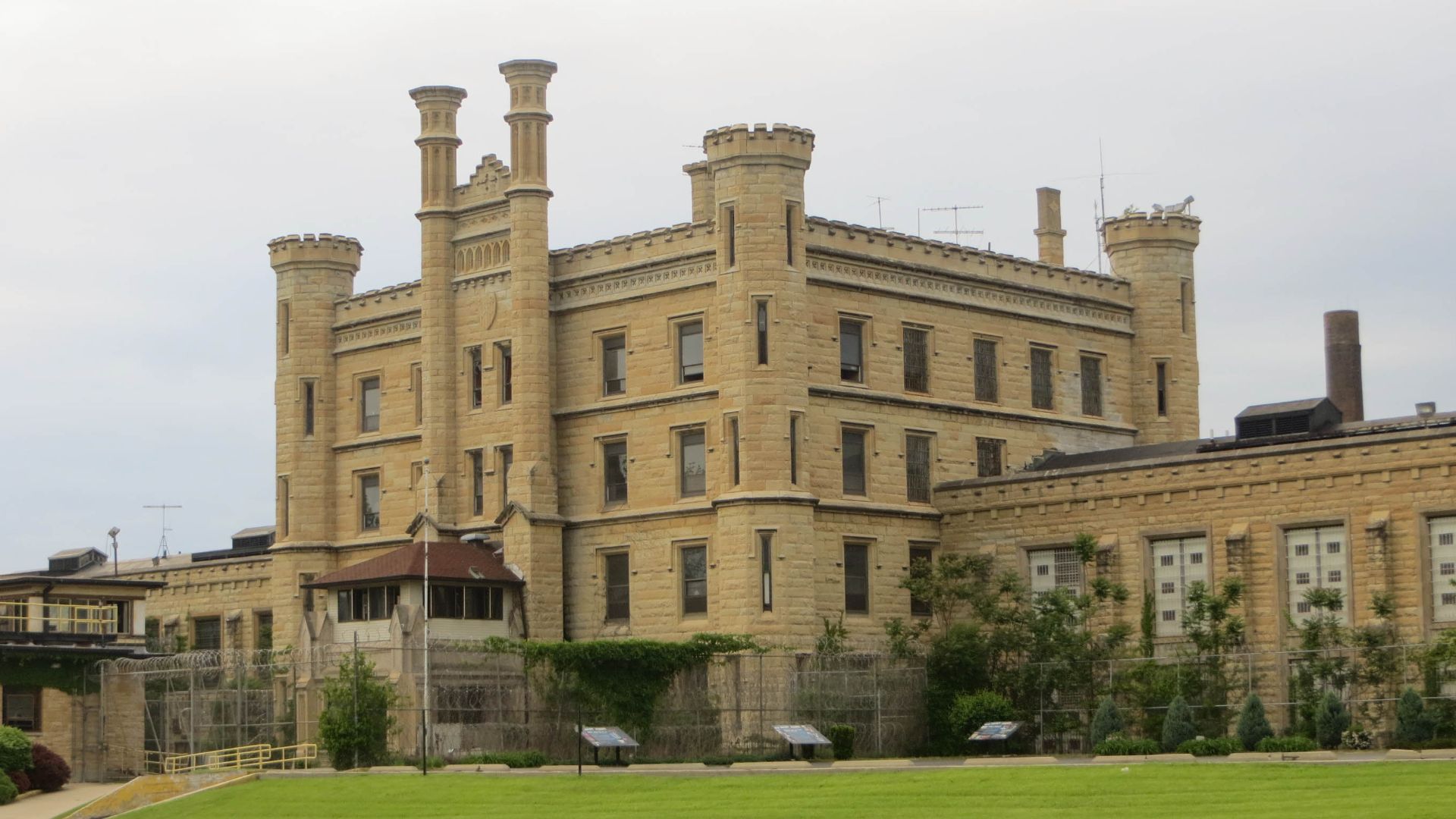 David Wilson from Oak Park, Illinois, USA, Wikimedia Commons
David Wilson from Oak Park, Illinois, USA, Wikimedia Commons
Old Joliet Prison, Joliet, Illinois (Cont.)
Now open to the public, guided tours lead through eerie cell blocks and guard towers, where echoes of history mix with ghostly tales. Paranormal investigators still visit after dark to search for the faint presence of the lives once locked behind those barred windows.
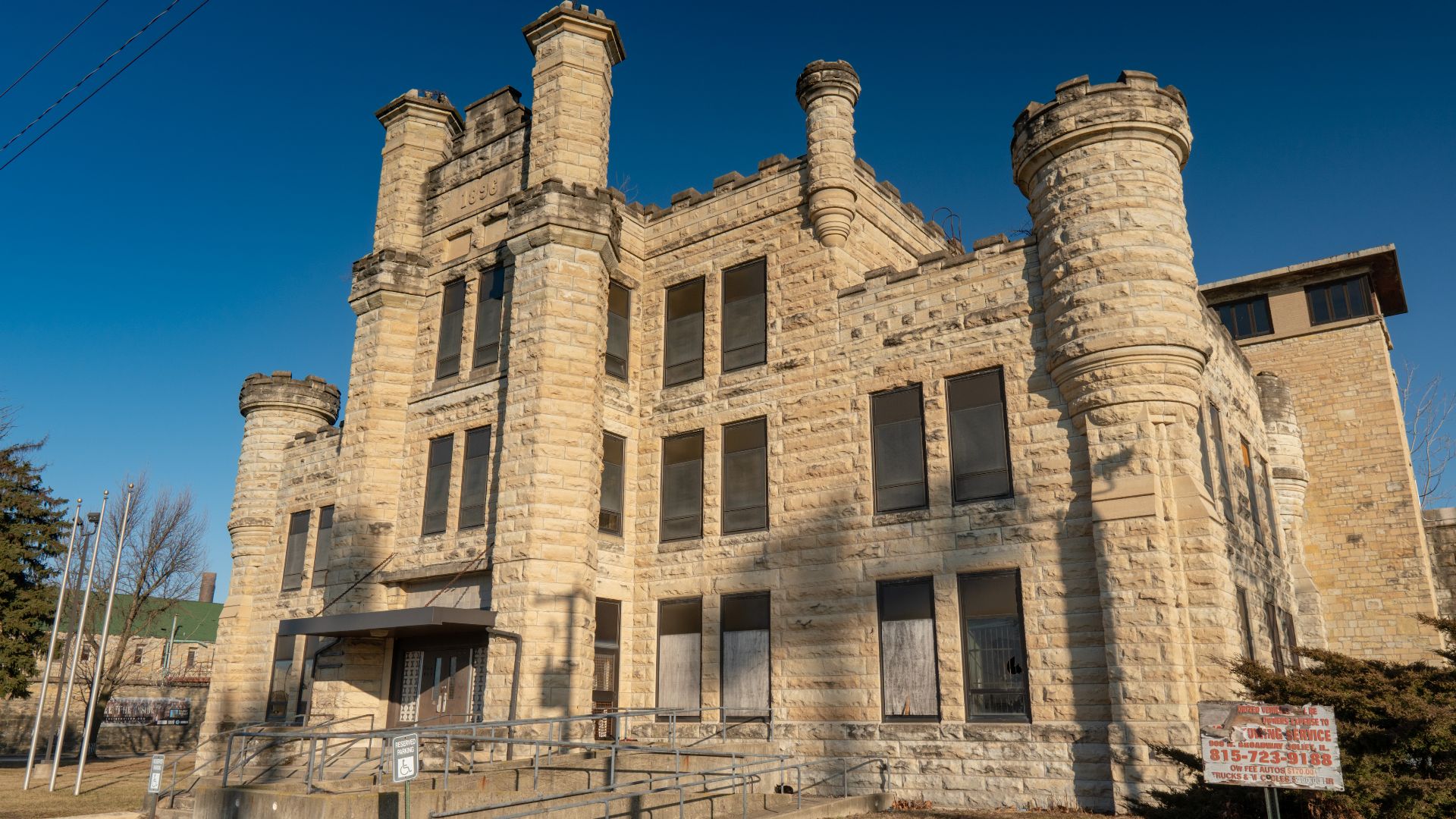 Joseph Gage from USA, Wikimedia Commons
Joseph Gage from USA, Wikimedia Commons
Ohio State Reformatory, Mansfield, Ohio
Built in 1886, the Ohio State Reformatory stands as one of the Midwest’s most striking historic landmarks. Once home to thousands of inmates, it later gained cinematic fame as the backdrop of The Shawshank Redemption, always attracting visitors eager to walk its storied corridors.
Ohio State Reformatory, Mansfield, Ohio (Cont.)
When night falls, the building’s atmosphere shifts. Its towering Gothic walls seem to hum with memory, giving rise to ghost stories and late-night tours. Here, history and the supernatural meet to offer explorers two versions of the same hauntingly real past.
Rose Island, Charlestown, Indiana
In the early 1900s, Rose Island was Indiana’s summer jewel—a lively amusement park along the Ohio River that promised endless fun. Guests swam, danced, and relaxed under the sun until the devastating 1937 flood brought the dream crashing down.
 Rose Island Abandoned Amusement Park (Charlestown, Indiana) by The Video Zone
Rose Island Abandoned Amusement Park (Charlestown, Indiana) by The Video Zone
Rose Island, Charlestown, Indiana (Cont.)
Today, the ruins rest inside Charlestown State Park, where visitors can walk the cracked foundations of pools and bridges reclaimed by nature. What remains isn’t eerie—it’s peaceful. It reminds visitors that joy, too, leaves a lasting mark on the scenery.
 Rose Island Abandoned Amusement Park (Charlestown, Indiana) by The Video Zone
Rose Island Abandoned Amusement Park (Charlestown, Indiana) by The Video Zone
Missouri State Penitentiary, Jefferson City, Missouri
Known as “the most gory 47 acres in America,” the Missouri State Penitentiary was once just punishment and chaos. From 1836 to 2004, it confined thousands, including infamous inmates, which earned it a reputation for violence that would later fuel its transformation into a learning site.
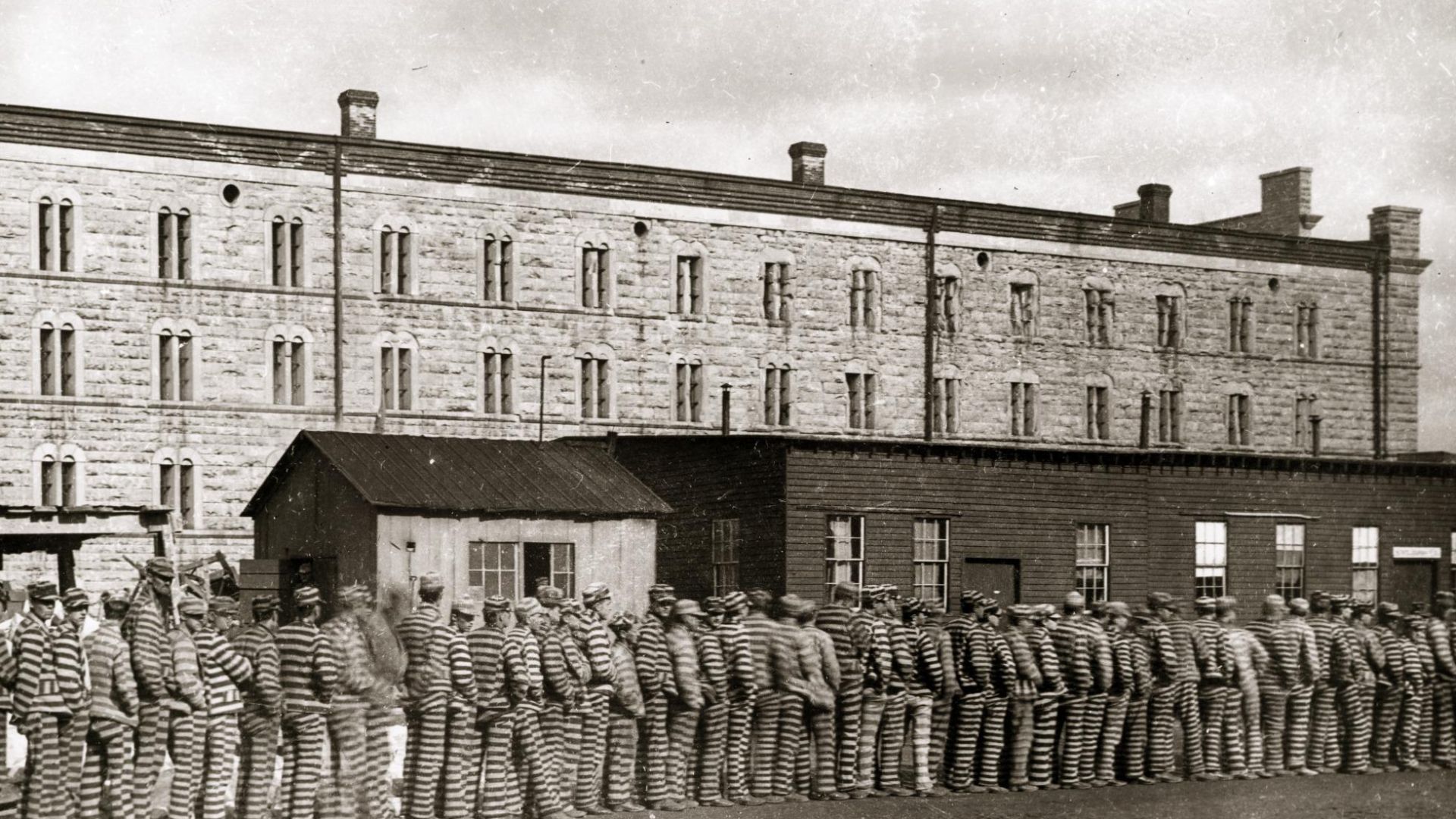 Oscar C. Kuehn, Wikimedia Commons
Oscar C. Kuehn, Wikimedia Commons
Missouri State Penitentiary, Jefferson City, Missouri (Cont.)
Can you visit it today? Absolutely. Visitors explore through guided tours that reveal its grim stories and lingering mysteries. The shift from prison to public attraction mirrors how curiosity often replaces fear. This site turned one of Missouri’s darkest spaces into an unforgettable piece of living history.
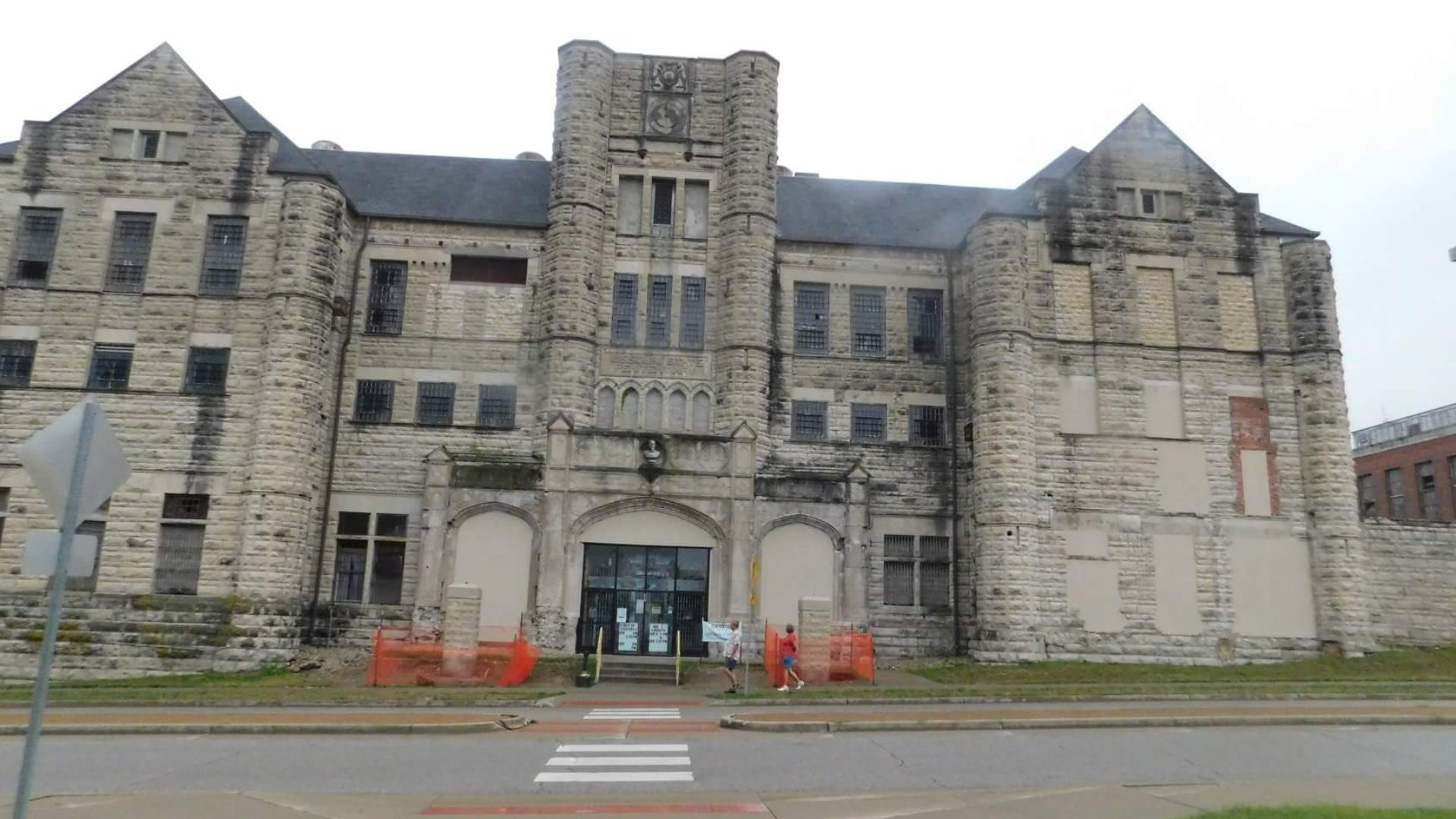 Stack-becky, Wikimedia Commons
Stack-becky, Wikimedia Commons
Ha Ha Tonka Castle, Camdenton, Missouri
High above Lake of the Ozarks, stone walls rise like something from a forgotten legend. Built in the early 1900s as a grand private estate, the mansion’s dream ended abruptly when fire reduced it to silent ruins in 1942.
Ha Ha Tonka Castle, Camdenton, Missouri (Cont.)
At Ha Ha Tonka State Park, the remnants of the estate overlook sweeping bluffs and endless water. Walking its trails, visitors can picture how once-grand halls surrendered to the wild Missouri terrain—a timeless meeting of human ambition and nature’s quiet persistence.
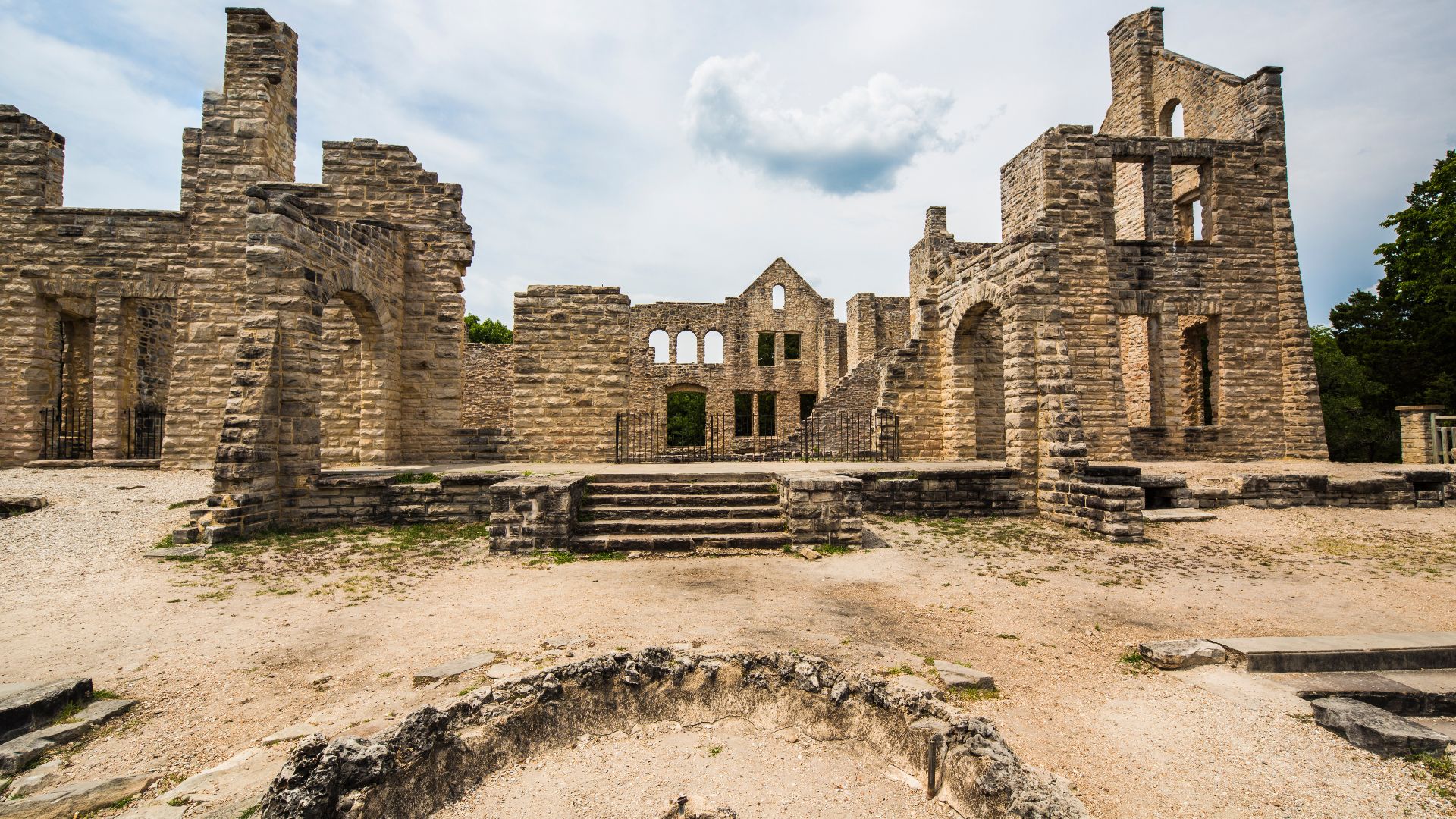 ThePhotoRun, Jason Runyon, Wikimedia Commons
ThePhotoRun, Jason Runyon, Wikimedia Commons
St Deroin, Nebraska
Hidden inside Indian Cave State Park, the ghost town of St Deroin feels caught between worlds. Founded in 1854, it flourished as a trading community before fading away in the early 1900s to leave behind quiet traces of frontier life.
 Ghost Town, St. Deroin, Ne Travel USA, Mr. Peacock & Friends, Hidden Treasures by dmfett
Ghost Town, St. Deroin, Ne Travel USA, Mr. Peacock & Friends, Hidden Treasures by dmfett
St Deroin, Nebraska (Cont.)
A restored schoolhouse and a historic cemetery are all that remain of the town today. Visitors now wander along grassy paths and read interpretive signs that echo the lives of families who once worked, learned, and worshiped in Nebraska’s long-lost river settlements.
 Ghost Town, St. Deroin, Ne Travel USA, Mr. Peacock & Friends, Hidden Treasures by dmfett
Ghost Town, St. Deroin, Ne Travel USA, Mr. Peacock & Friends, Hidden Treasures by dmfett
Edinburgh Manor, Scotch Grove, Iowa
Edinburgh Manor’s quiet halls hide stories of compassion and hardship. Since its construction in 1910 as a replacement for the county asylum and poor farm, it provided care for those society had forgotten. Back then, it served as both a refuge and an institution for a full century.
 Curious Iowa: How did Edinburgh Manor become a haunted attraction? by The Gazette
Curious Iowa: How did Edinburgh Manor become a haunted attraction? by The Gazette
Edinburgh Manor, Scotch Grove, Iowa (Cont.)
Closed in 2010, the manor now draws history lovers and paranormal investigators alike. Through guided visits and overnight stays, tourists experience the building’s layered past firsthand—part historical exploration, part eerie reminder of lives once lived within its walls.
 Curious Iowa: How did Edinburgh Manor become a haunted attraction? by The Gazette
Curious Iowa: How did Edinburgh Manor become a haunted attraction? by The Gazette
Squirrel Cage Jail, Council Bluffs, Iowa
In Council Bluffs, visitors can explore one of America’s strangest prisons—the Squirrel Cage Jail. It was constructed in 1885 and utilized a rotating cell design that spun like a carousel. This innovation was designed to enhance security and efficiency during its 84-year operation.
Squirrel Cage Jail, Council Bluffs, Iowa (Cont.)
The jail nearly faced demolition in 1979, but preservationists intervened, saving it and transforming it into a museum. Guided excursions reveal its mechanical ingenuity and eerie charm to showcase one of only three remaining rotary jails in the country that still stands today.
 Robert Thall, Wikimedia Commons
Robert Thall, Wikimedia Commons
Fayette Historic State Park, Fayette, Michigan
On Michigan’s Upper Peninsula, Fayette once roared with furnaces smelting iron from local ore founded in 1867. From then, it grew into a self-contained industrial town, complete with workers’s homes, shops, and the sound of machinery reverberating across Big Bay de Noc.
Fayette Historic State Park, Fayette, Michigan (Cont.)
When operations ceased in the 1890s, Fayette fell silent, its purpose lost but its story preserved. Currently, guests stroll through restored buildings and furnace ruins to trace the transformation from a gritty industrial hub to a quiet lakeside historic park.
Quincy Mine, Hancock, Michigan
Back in 1846, the Quincy Mine began pulling copper from Michigan’s rocky depths, launching a century-long era of prosperity. Its towering No 2 Shaft House once dominated the skyline, a demonstration of the determination that fueled America’s industrial rise.
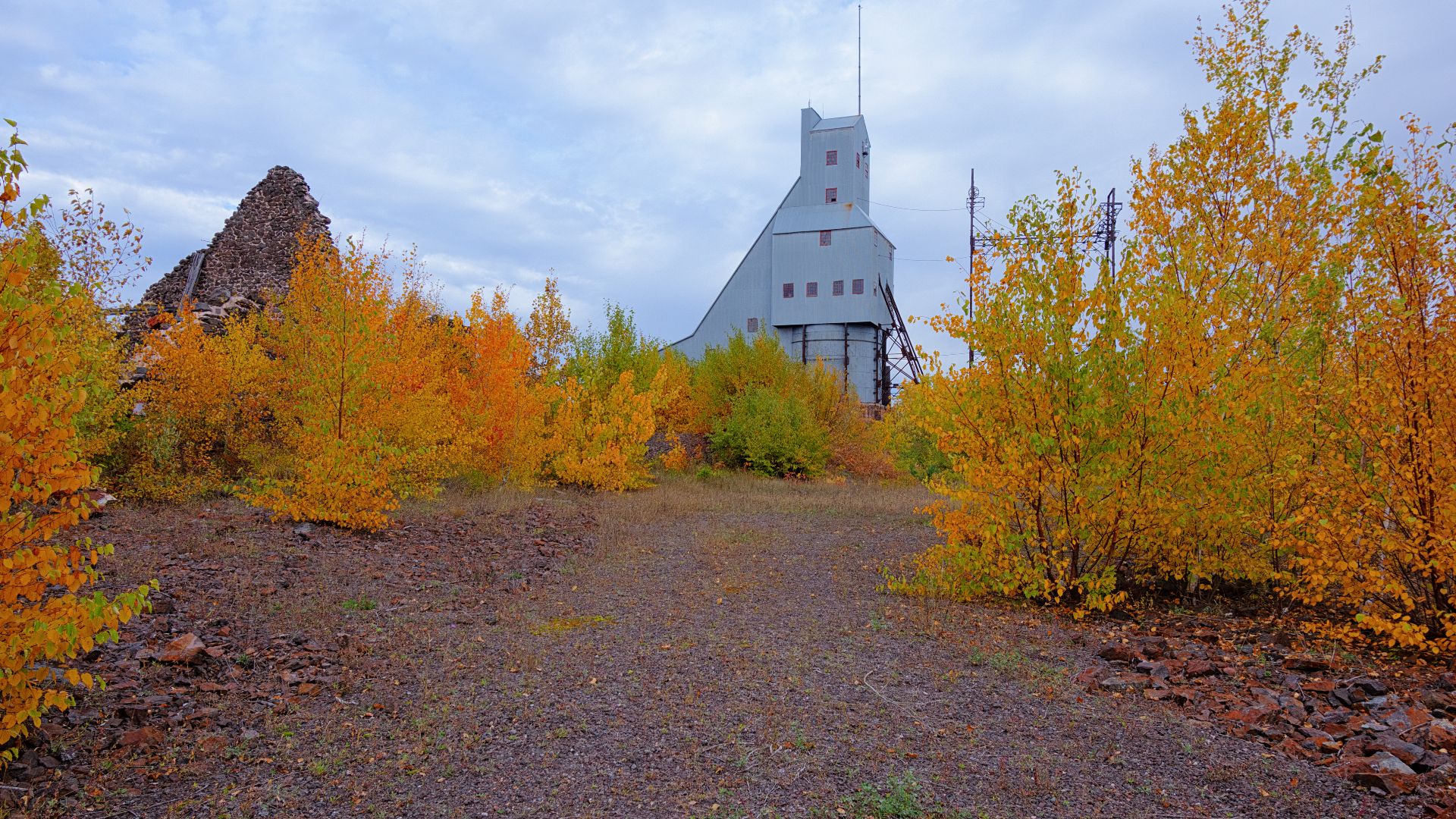 Diane Dahlstrom, Wikimedia Commons
Diane Dahlstrom, Wikimedia Commons
Quincy Mine, Hancock, Michigan (Cont.)
The Quincy Mine is now preserved as a heritage site, and it invites visitors underground to explore its original tunnels and equipment. Each tour reveals the scale of the operation and honors the generations of miners whose labor shaped the nation’s economic foundation.
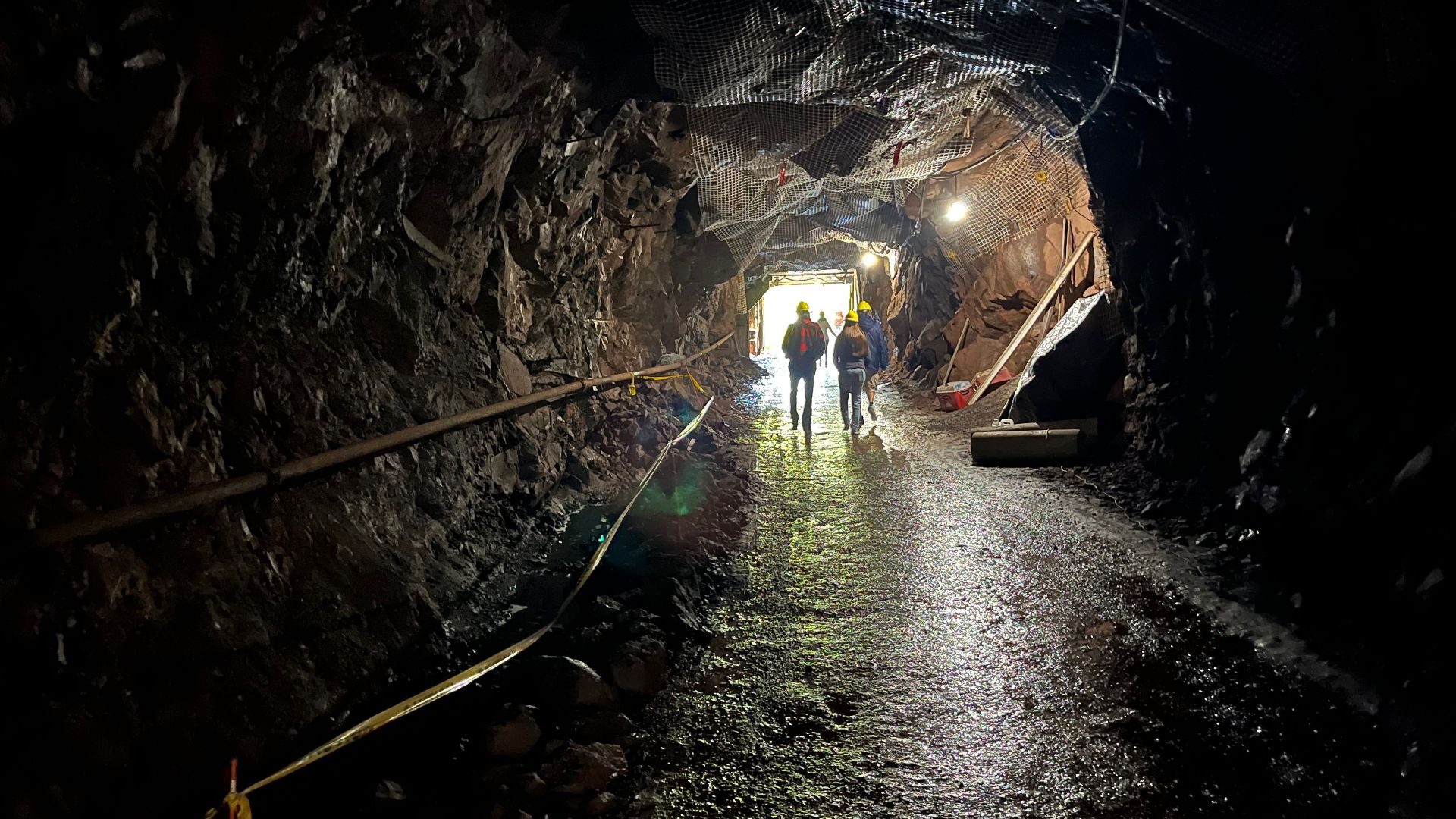 Wickanninish, Wikimedia Commons
Wickanninish, Wikimedia Commons
Cliff, Michigan
Established in 1844, Cliff became the first successful copper-mining settlement in Michigan’s Keweenaw Peninsula. This mine thrived through the 1870s, producing millions of pounds of copper before its boom faded to leave behind stone ruins and chimney stacks swallowed by forest.
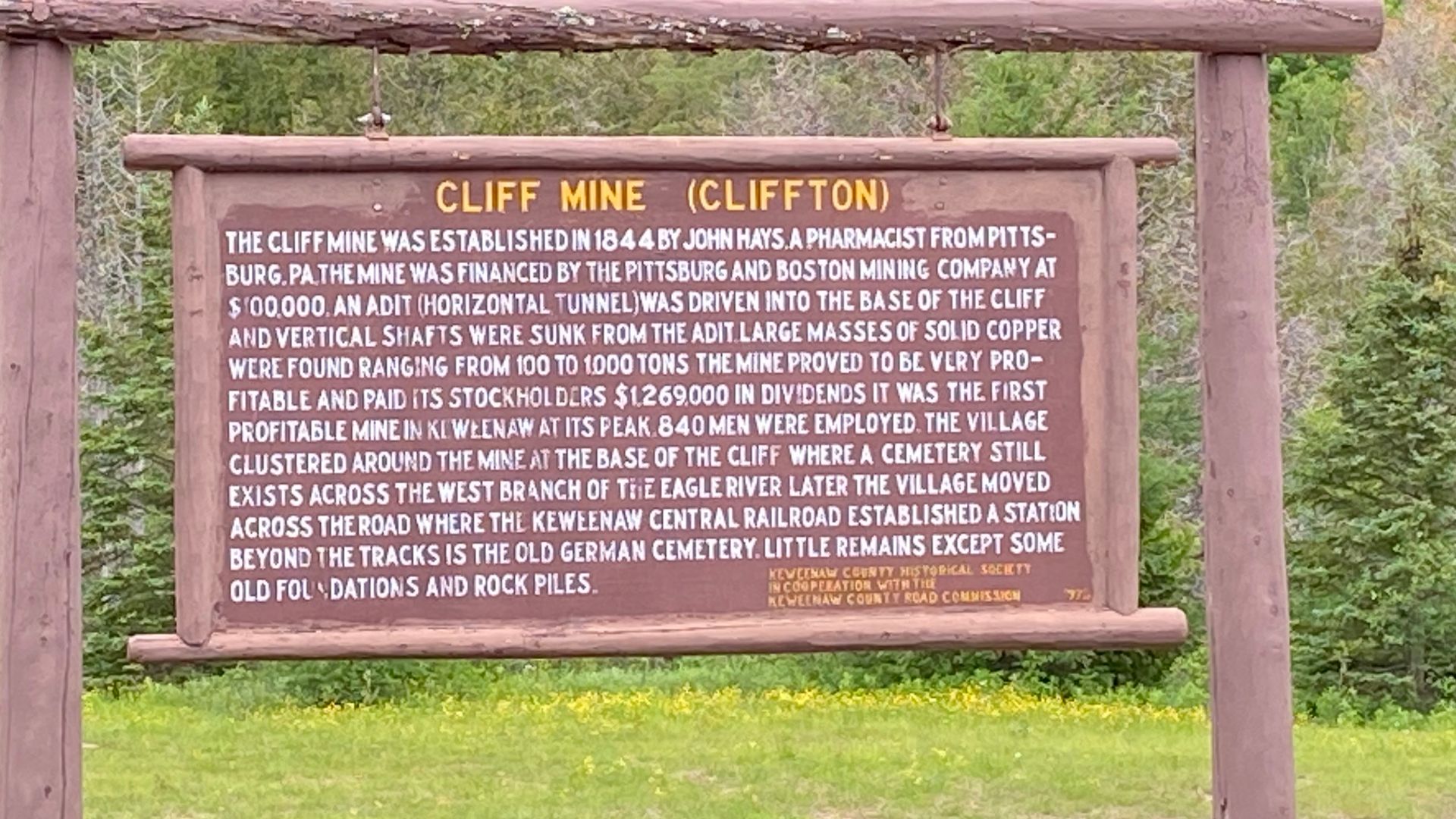 Fondycardinals, Wikimedia Commons
Fondycardinals, Wikimedia Commons
Cliff, Michigan (Cont.)
When you go there today, you may be able to hike trails off Cliff Drive to discover these remnants firsthand. Twin cemeteries and crumbling structures tell stories of ambition and loss, where the silence of nature now guards the legacy of the peninsula’s earliest mining triumph.
 A SPOOKY FORGOTTEN CEMETERY ~ CLIFF CEMETERY #Cemetery #keweenaw by Our Cottage Farm
A SPOOKY FORGOTTEN CEMETERY ~ CLIFF CEMETERY #Cemetery #keweenaw by Our Cottage Farm
Central, Michigan
Born during the copper boom of the 1860s, Central grew into a lively town on the Keweenaw Peninsula. Homes, shops, mines, and other businesses filled the place, but as resources dwindled in the early 1900s, the once-busy community slowly slipped into abandonment.
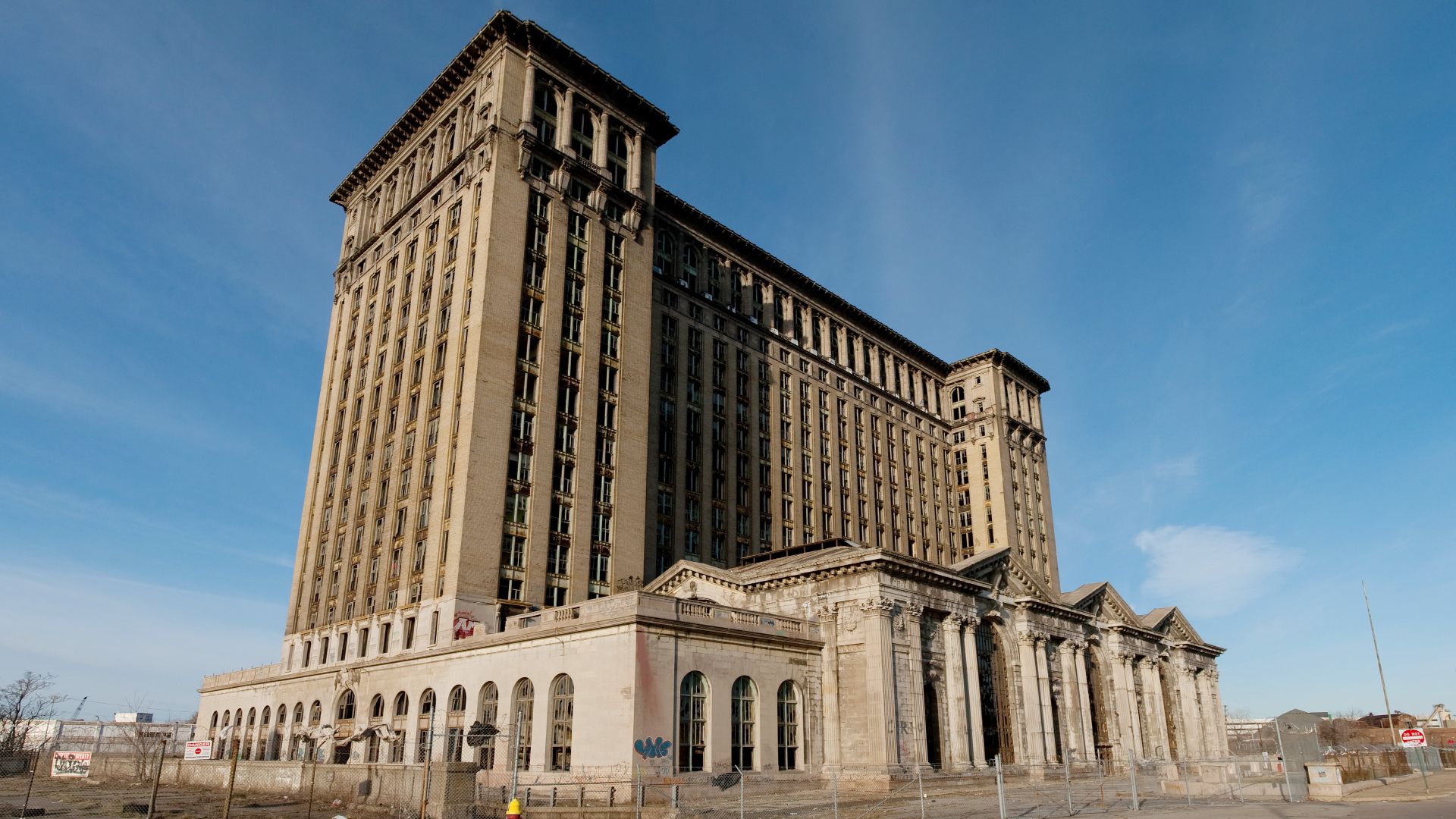 Albert duce, Wikimedia Commons
Albert duce, Wikimedia Commons
Central, Michigan (Cont.)
Though its streets have gone quiet, Central endures through its preserved ruins and local tradition. Annual reunions bring descendants and visitors together, and this turns the ghost town into a living memory of Michigan’s proud mining and pioneer heritage.
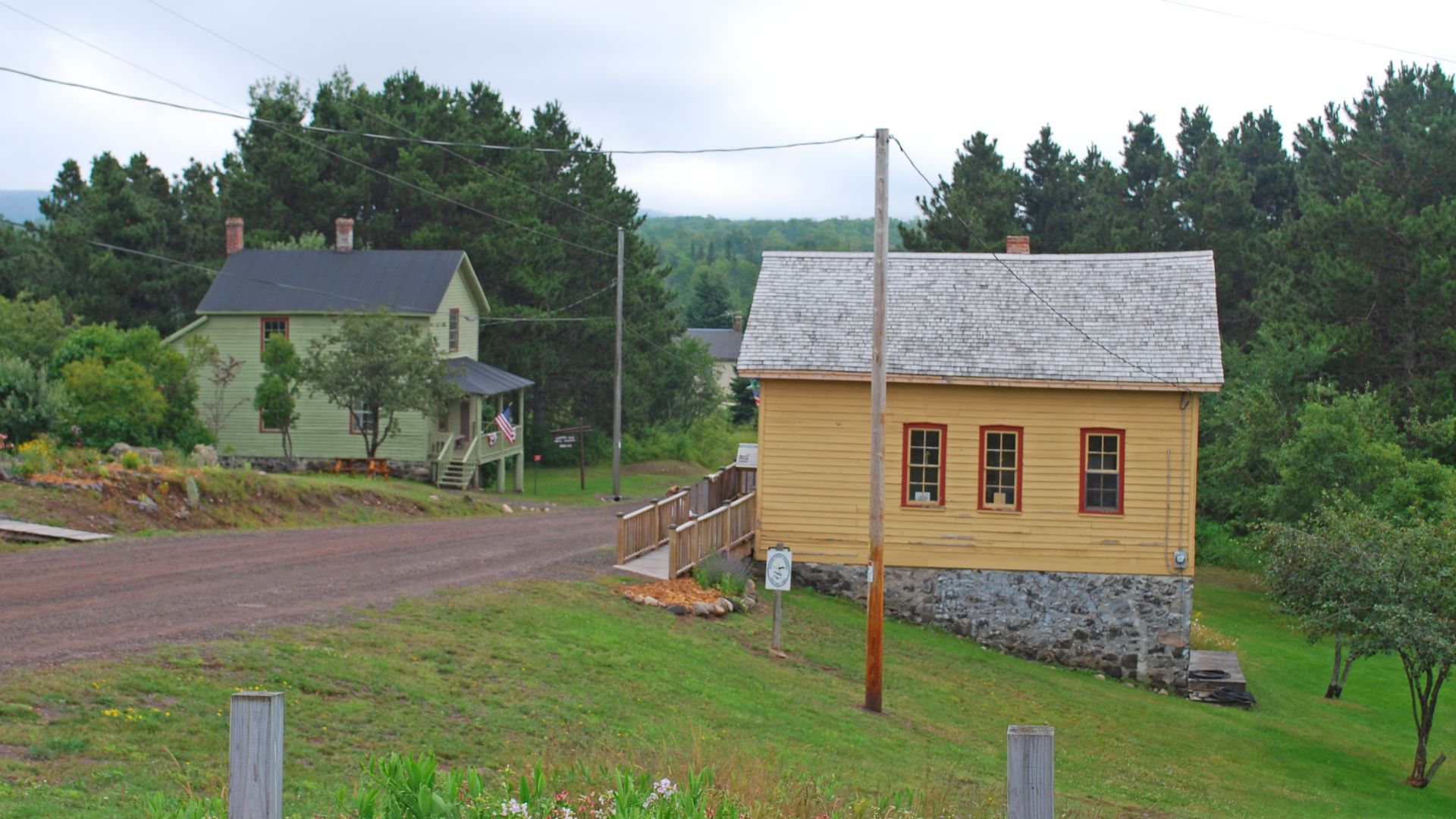 Andrew Jameson, Wikimedia Commons
Andrew Jameson, Wikimedia Commons
Delaware, Michigan
Operating between 1847 and 1887, the Delaware Mine was a vital part of Michigan’s copper empire. Its tunnels once thrummed with activity to support nearby settlements that depended on the industry’s demand for skill and steady production.
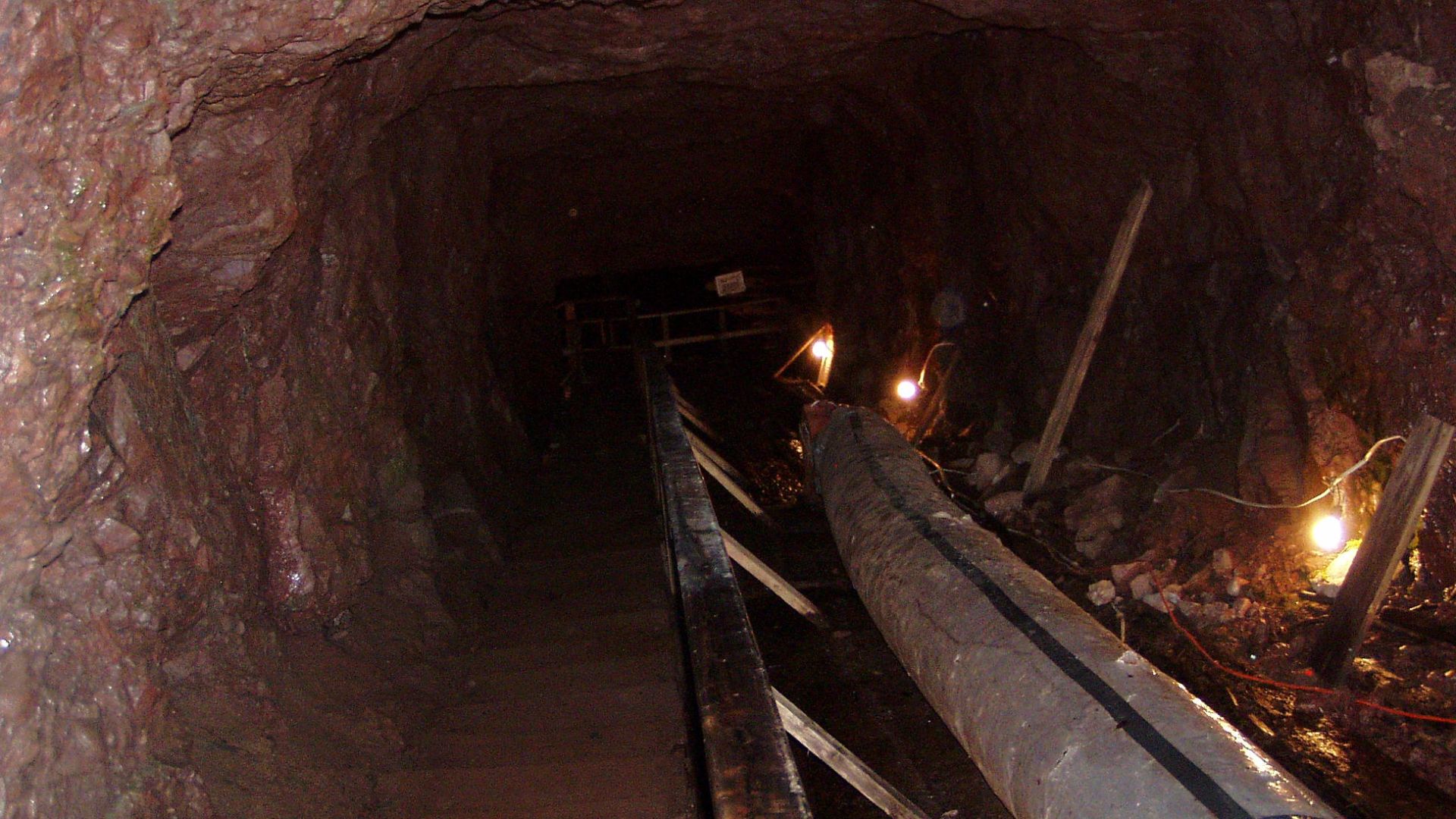 Chris Light, Wikimedia Commons
Chris Light, Wikimedia Commons
Delaware, Michigan (Cont.)
Today, access is limited, but the Delaware Mine Tour offers a rare glimpse into this world. Visiting guests descend into preserved shafts to learn how the site balances public history and preservation amid the rugged beauty of the Keweenaw Peninsula.
Banning State Park Quarry, Sandstone, Minnesota
Follow the winding trails of Banning State Park, and the forest uncloaks an industrial secret—towering sandstone cliffs framing the remains of a once-thriving quarry. From 1892 to 1912, workers carved blocks here for buildings across Minnesota and beyond.
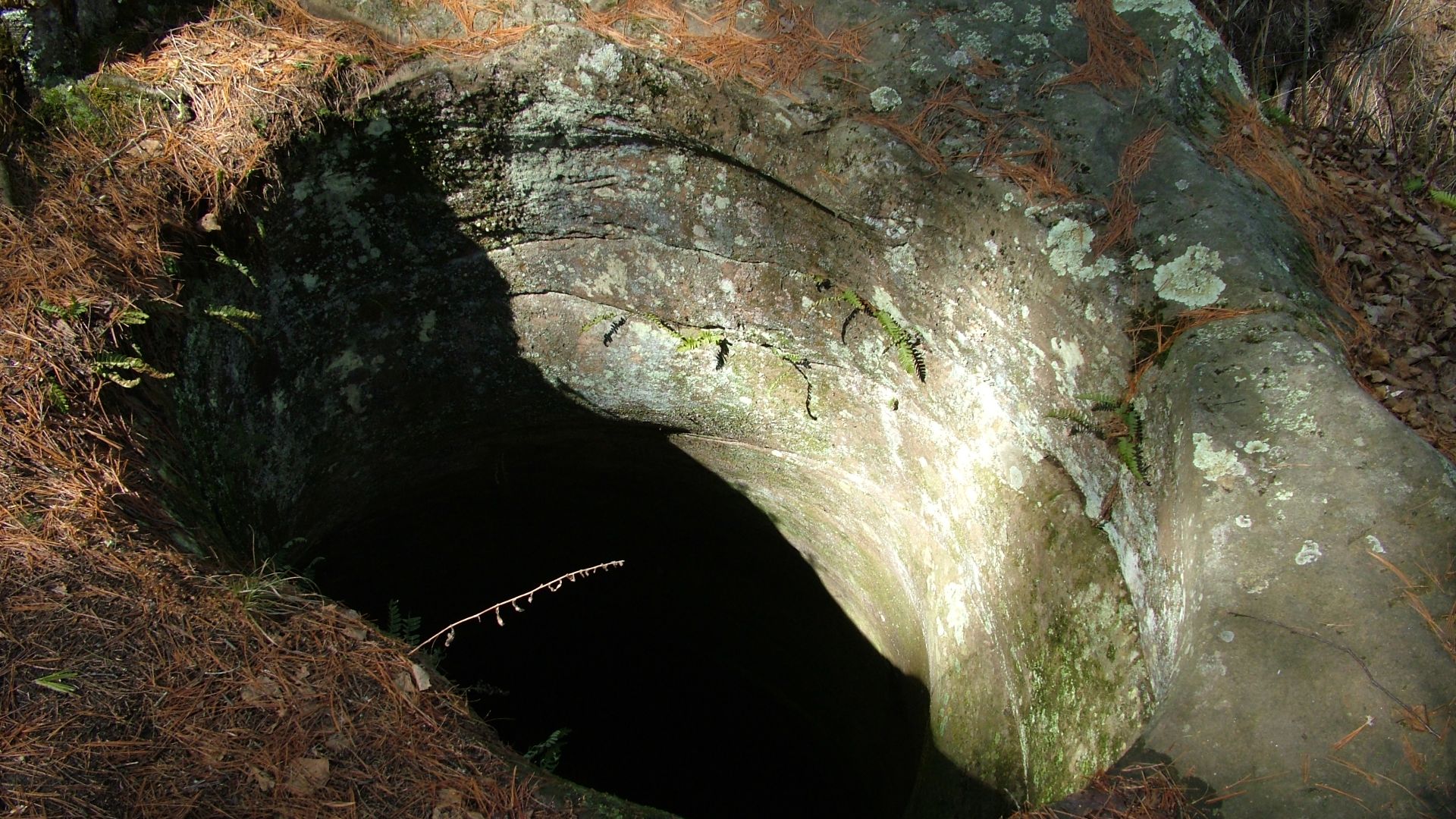 The original uploader was AaronRoe at English Wikipedia., Wikimedia Commons
The original uploader was AaronRoe at English Wikipedia., Wikimedia Commons
Banning State Park Quarry, Sandstone, Minnesota (Cont.)
Now the site sits silent, reclaimed by nature’s patience. Its crumbling structures and moss-covered stone walls tell a story of industry turned to memory, where every fallen beam feels like a chapter slowly fading into the earth. Hikers will love it here.
Moonville Tunnel, Ohio
Miners carved the Moonville Tunnel through Vinton County’s hills in the 1850s to connect a bustling coal community to the outside world. The railroad carried wealth and workers, its locomotives reverberating through the forest until the town disappeared entirely.
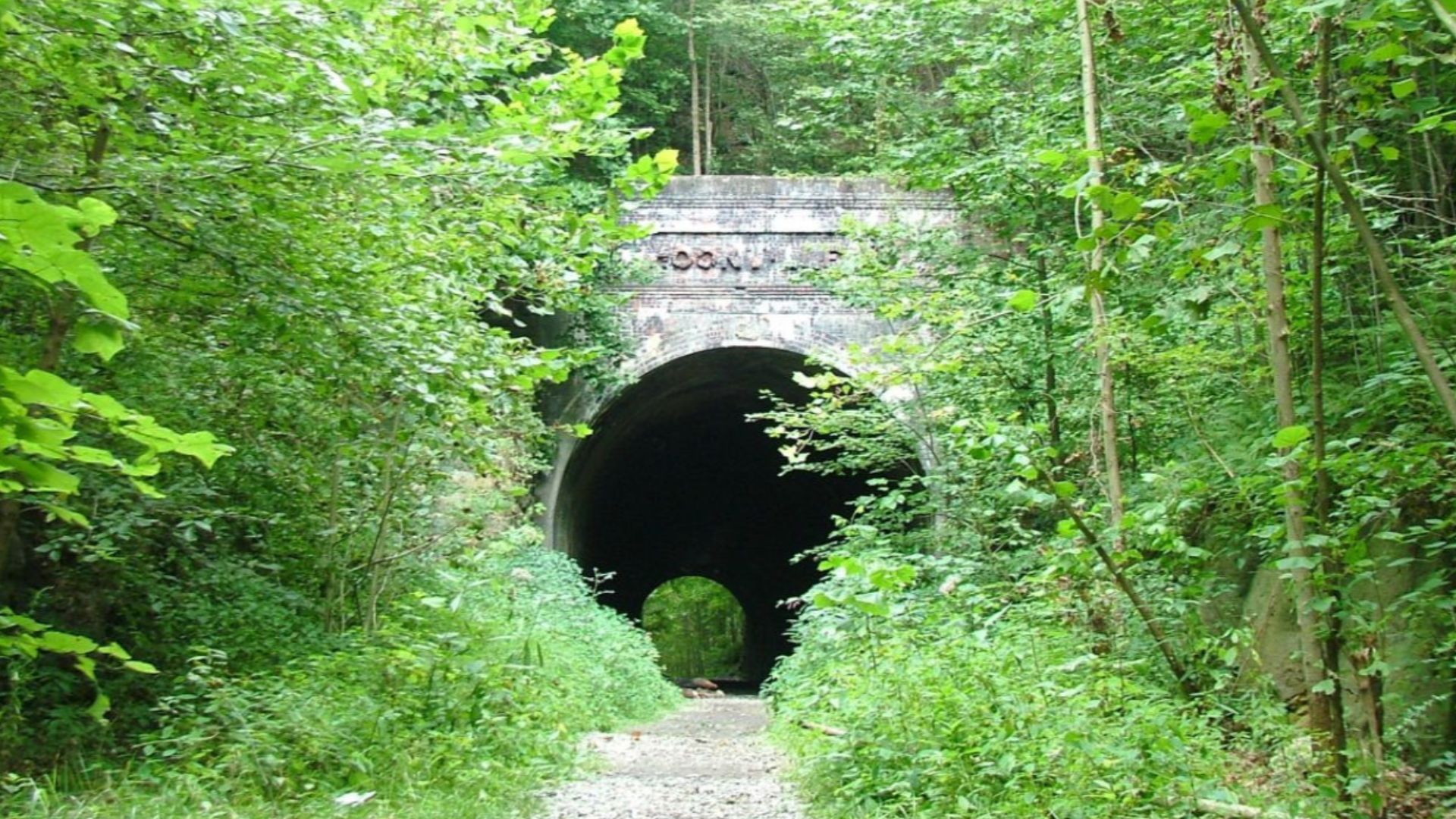 ChristopherM, Wikimedia Commons
ChristopherM, Wikimedia Commons
Moonville Tunnel, Ohio (Cont.)
Planning to visit? You’ll only see the tunnel and a stone portal draped in moss. If you’re lucky, you’ll get a knowledgeable tour guide to explain the mystery. Accessible by the Moonville Rail Trail, it draws hikers and photographers seeking a glimpse of history.
Squire’s Castle, Ohio
Built in the 1890s as a gatehouse for a dream home that never came to be, Squire’s Castle now stands proudly in Willoughby Hills. Its medieval-style stonework evokes a sense of fantasy, though its story remains rooted in ambition and abandonment.
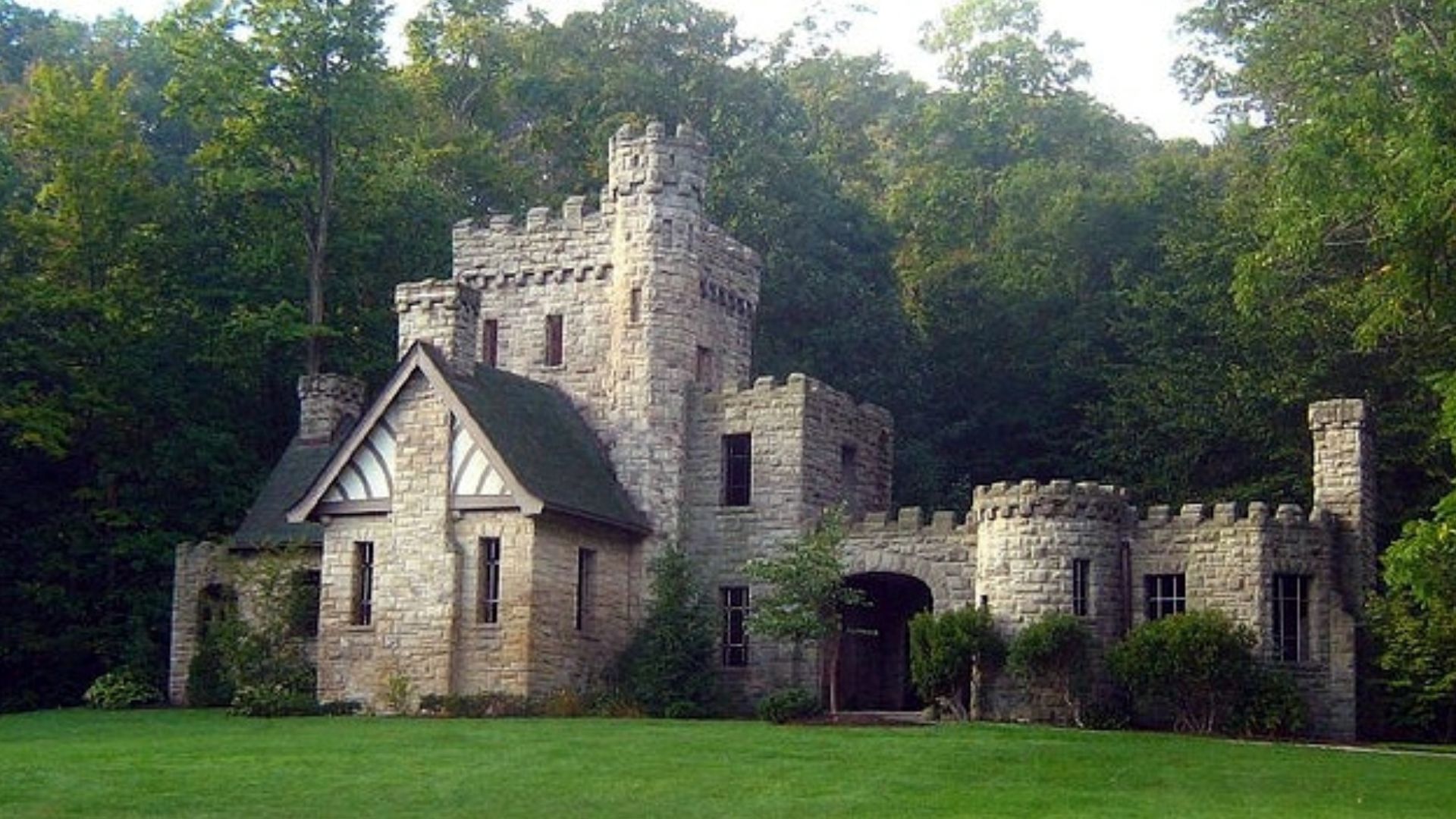 sunsets_for_you, Wikimedia Commons
sunsets_for_you, Wikimedia Commons
Squire’s Castle, Ohio (Cont.)
Guests today can wander its arched corridors within the North Chagrin Reservation. Once a hunting retreat, it’s now a beloved local landmark where history and imagination merge, showcasing how unfinished dreams can still leave a lasting legacy behind.
Fairfield County Infirmary, Ohio
The Fairfield County Infirmary was erected in 1828, and it began as a humble poorhouse before evolving into a complex care facility. Across 157 years, its halls sheltered the sick, the elderly, and those society overlooked. Over the years, it adapted with each generation’s changing needs.
Fairfield County Infirmary, Ohio (Cont.)
When the infirmary closed in 1985, the halls fell silent; yet, the building remains with quiet dignity. Open only during special events, it uncloaks traces of compassion and the steadfast resilience that defines its long, human story.
 The Fairfield County Infirmary: A Haunted History by TravelwithAustin
The Fairfield County Infirmary: A Haunted History by TravelwithAustin
Freda, Michigan
Freda grew up around the Champion Copper Company’s mill, a community built to serve Michigan’s booming mining industry. Though the town has partly faded, it remains unusual among ghost towns, still home to a handful of residents among its historic ruins.
Freda, Michigan (Cont.)
The haunting remnants of Champion Mill dominate the scenery to offer limited access to visitors. This blend of living community and preserved history creates a rare glimpse into a town that straddles the line between survival and abandonment.
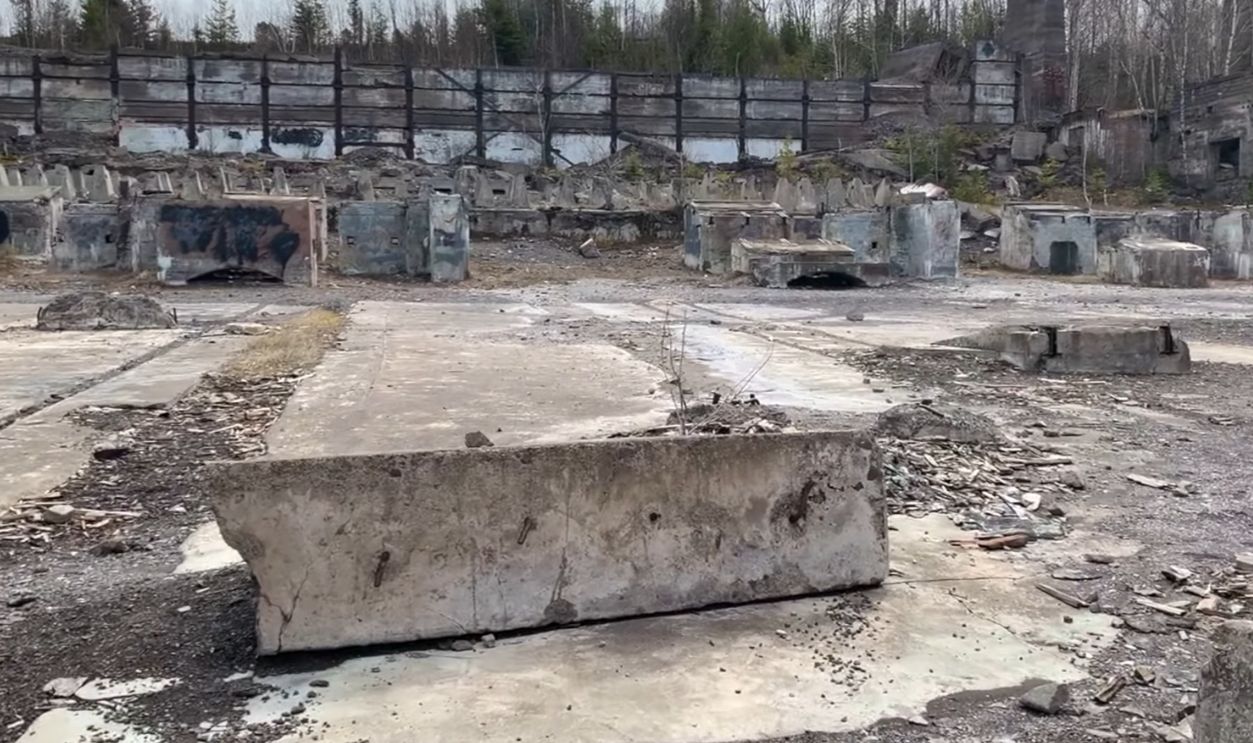 CHAMPION MILL RUINS TOUR | 'Ghost Town' of Freda, MI by Brian & Heather Outdoors
CHAMPION MILL RUINS TOUR | 'Ghost Town' of Freda, MI by Brian & Heather Outdoors
Washburn A Mill, Minneapolis, Minnesota
Once a powerhouse of flour production, Minneapolis’s Washburn A Mill symbolized America’s industrial might. Rebuilt after a deadly 1878 explosion, it grew into a cornerstone of the city’s economy, supplying grain products across the country for nearly a century.
Washburn A Mill, Minneapolis, Minnesota (Cont.)
Today, it stands preserved as part of Mill City Museum. Guests explore its stone ruins through guided tours, stepping into a time capsule where the roar of machinery once defined the Midwest’s manufacturing legacy and the resilience that followed tragedy.
Savanna Army Depot, Savanna, Illinois
The Savanna Army Depot once bustled with munitions assembly and military operations that spanned two world wars after its establishment in 1917. Trains, warehouses, and bunkers filled its grounds to power the country’s defense effort for nearly a century before its closure.
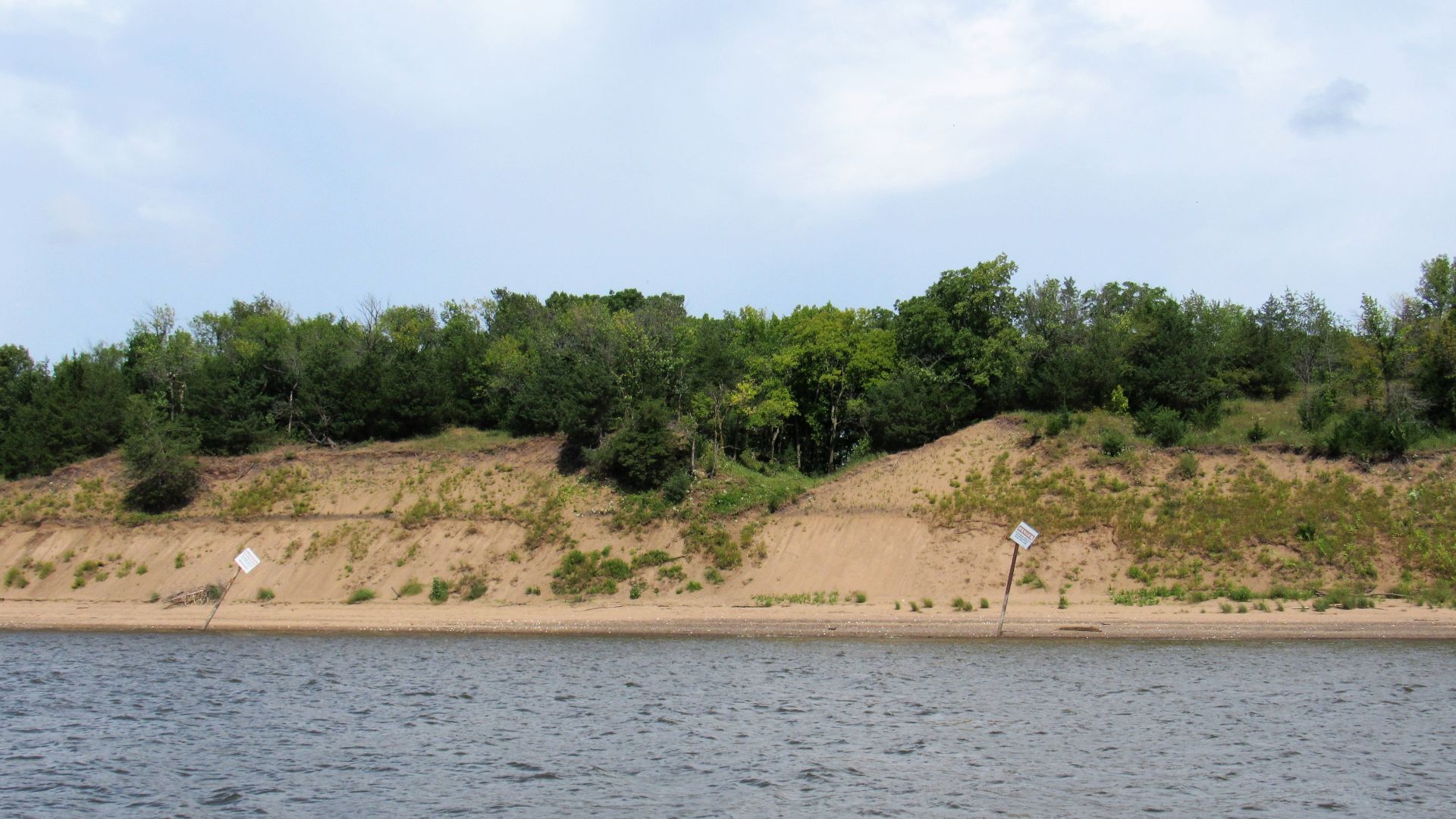 Farragutful, Wikimedia Commons
Farragutful, Wikimedia Commons
Savanna Army Depot, Savanna, Illinois (Cont.)
Now part of the Upper Mississippi River National Wildlife Refuge, parts of the depot lie open to explorers within the Lost Mound Unit. Nature slowly reclaims the land, yet scattered structures remain—quiet reminders of the arsenal’s long, disciplined service.
 Abandoned Savanna Army Depot - Savanna Illinois - Roadside America by Abandoned or Cool
Abandoned Savanna Army Depot - Savanna Illinois - Roadside America by Abandoned or Cool


